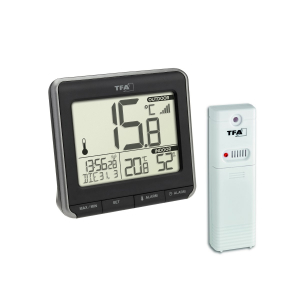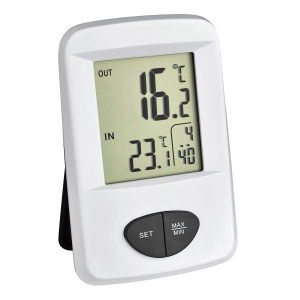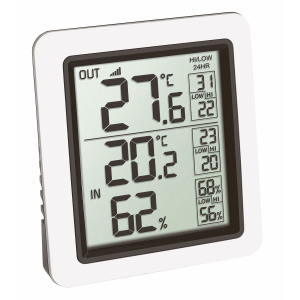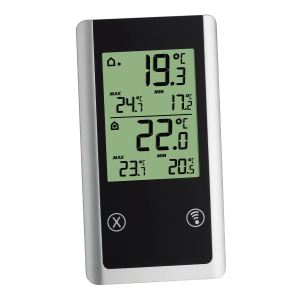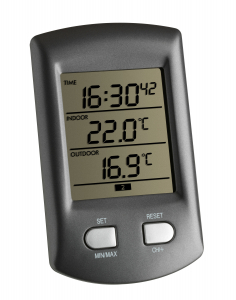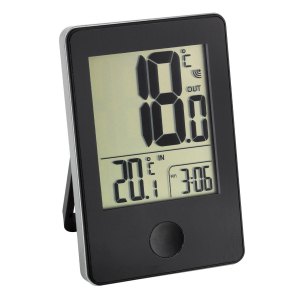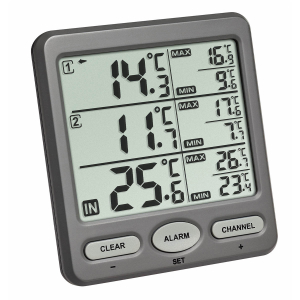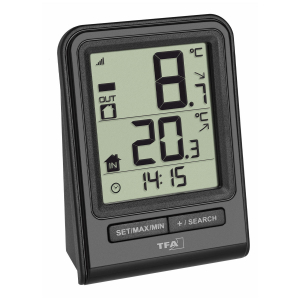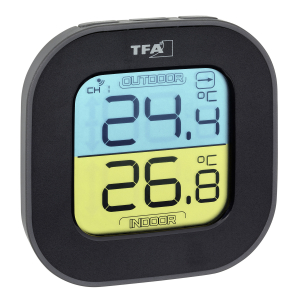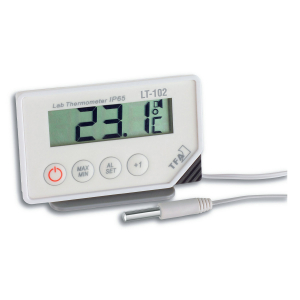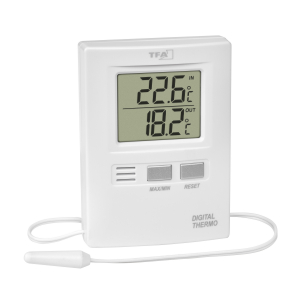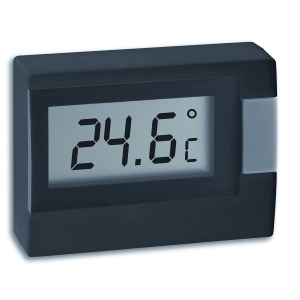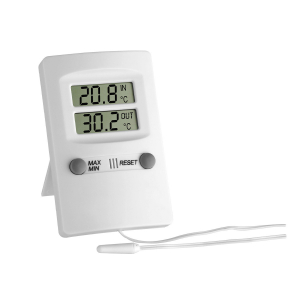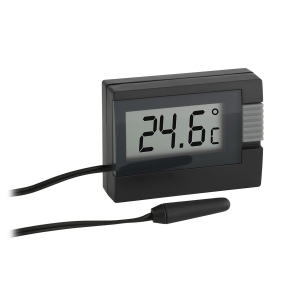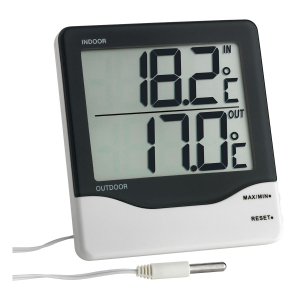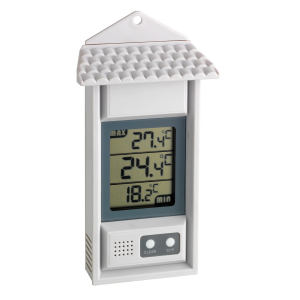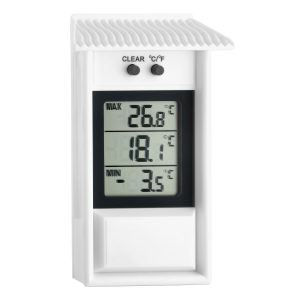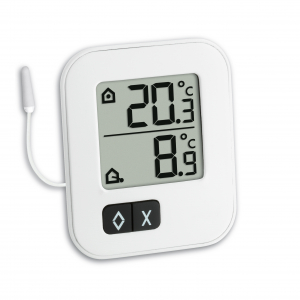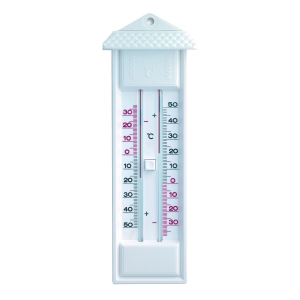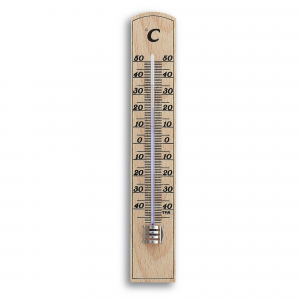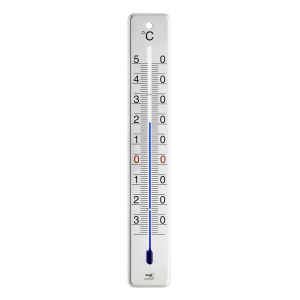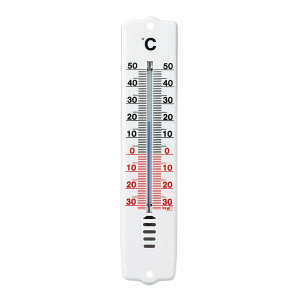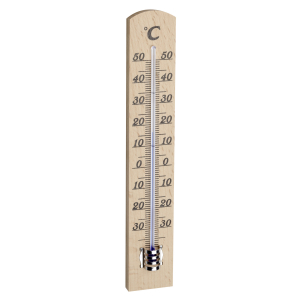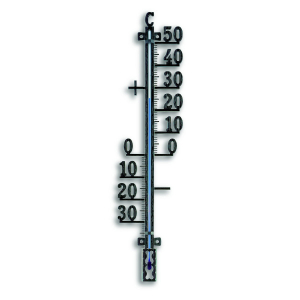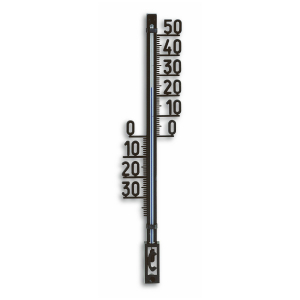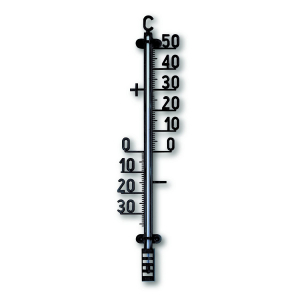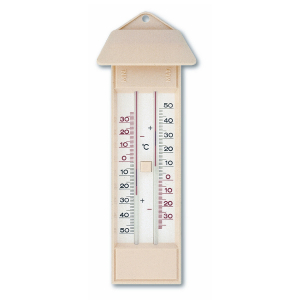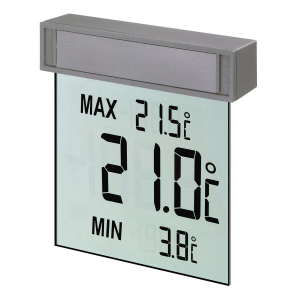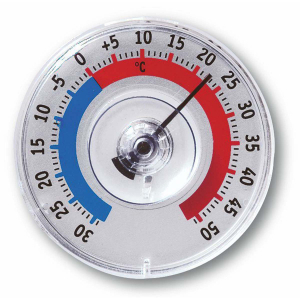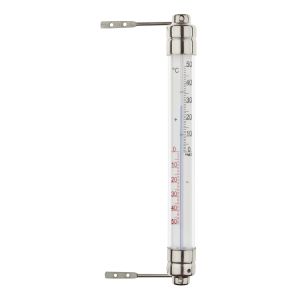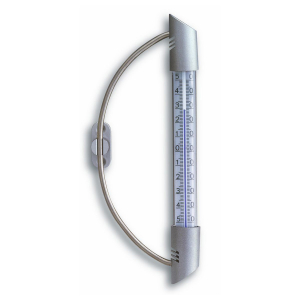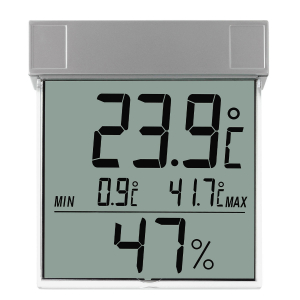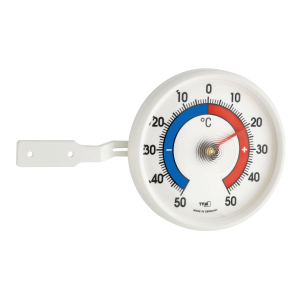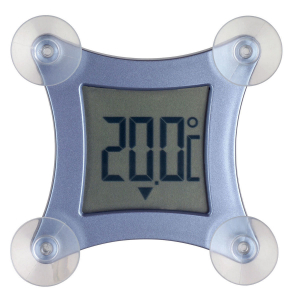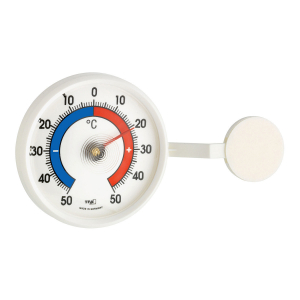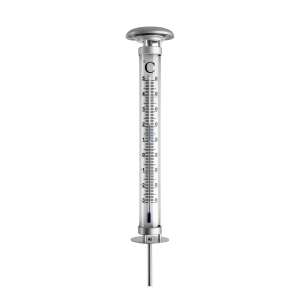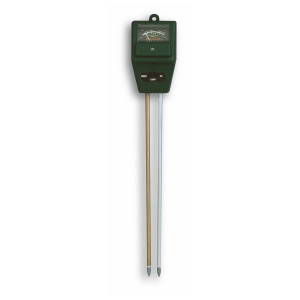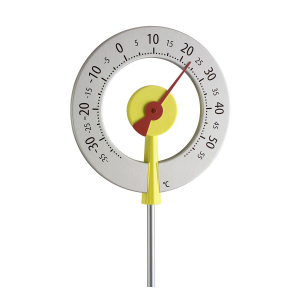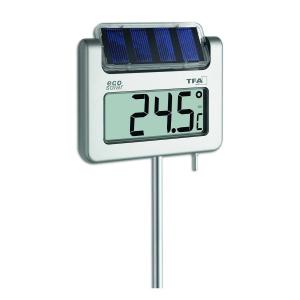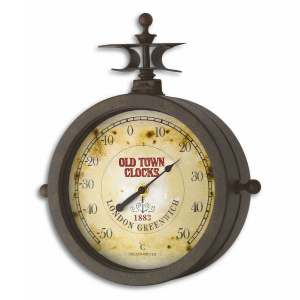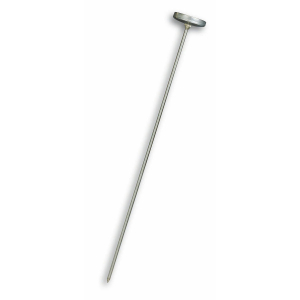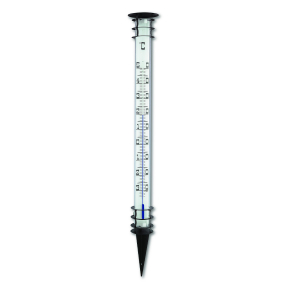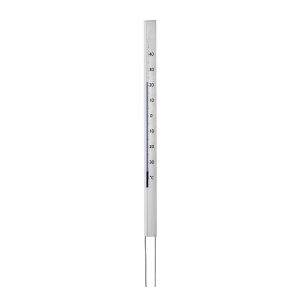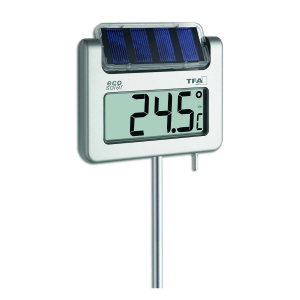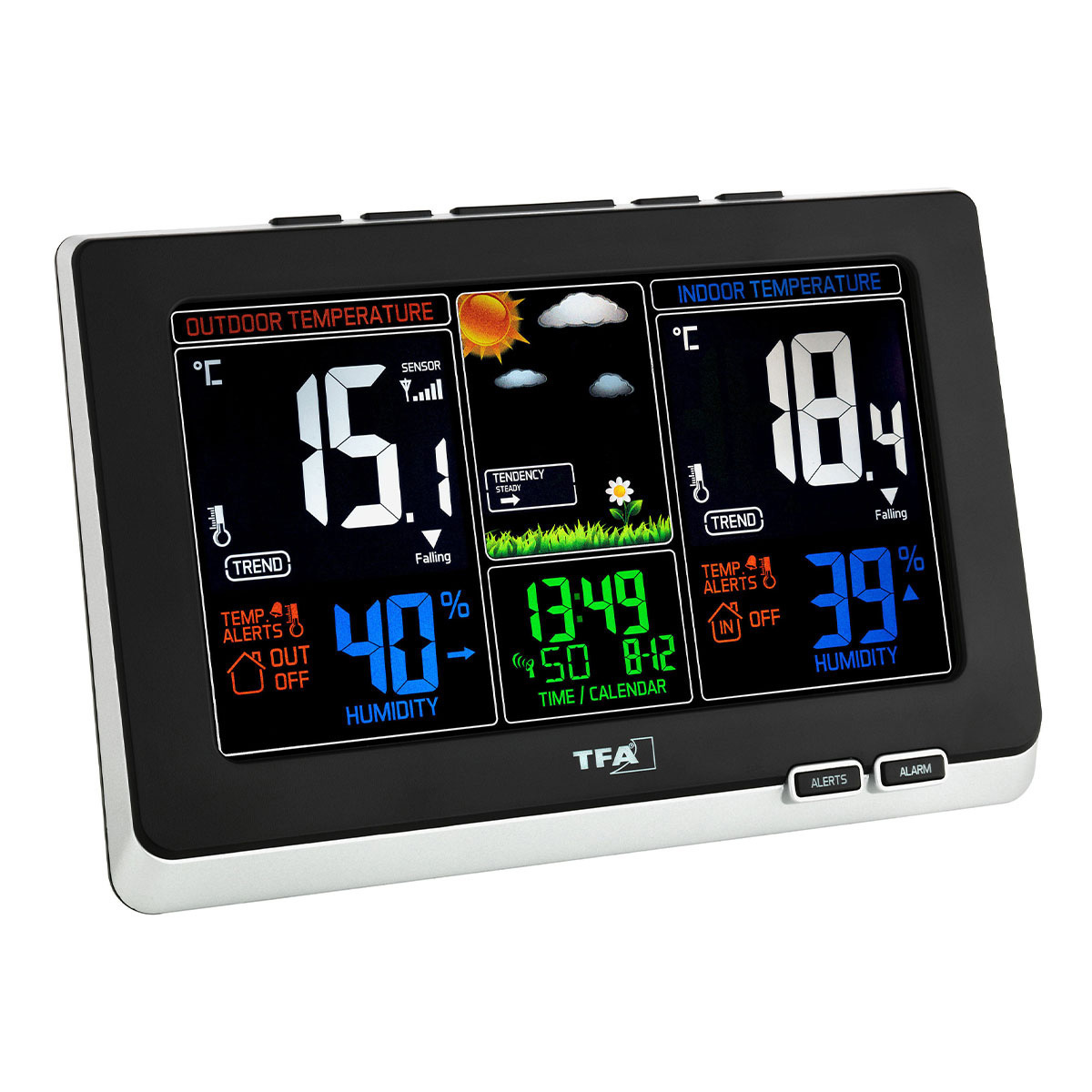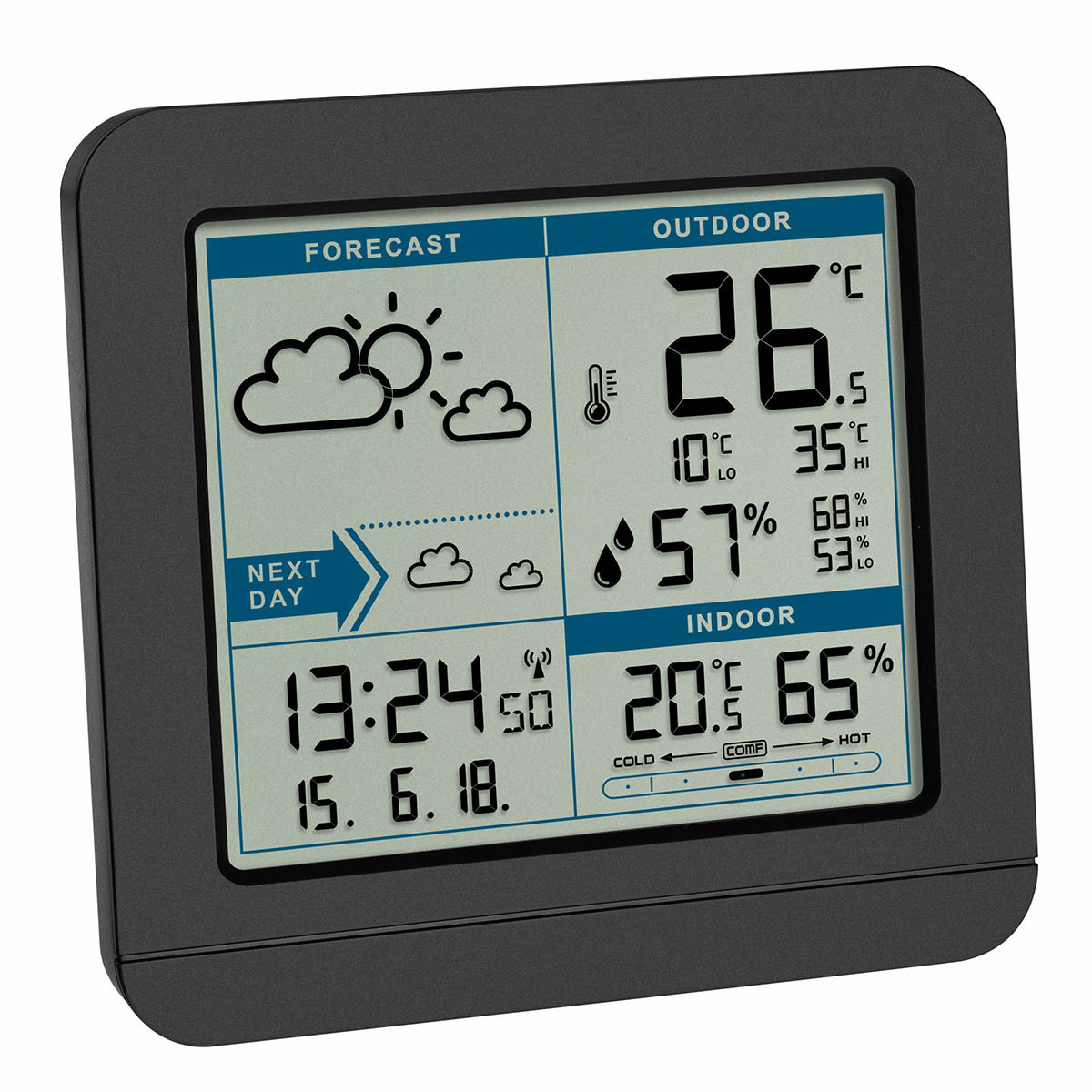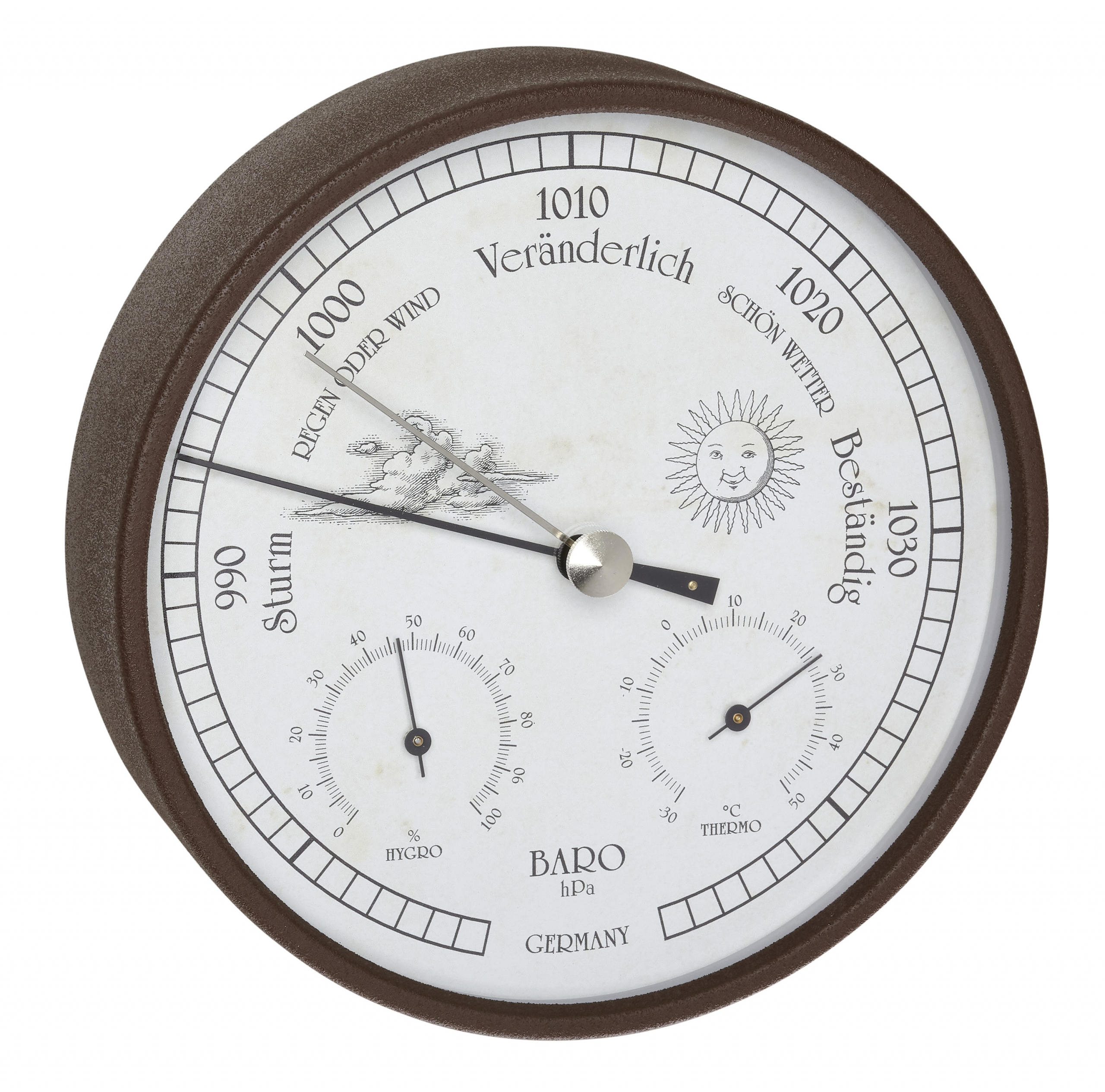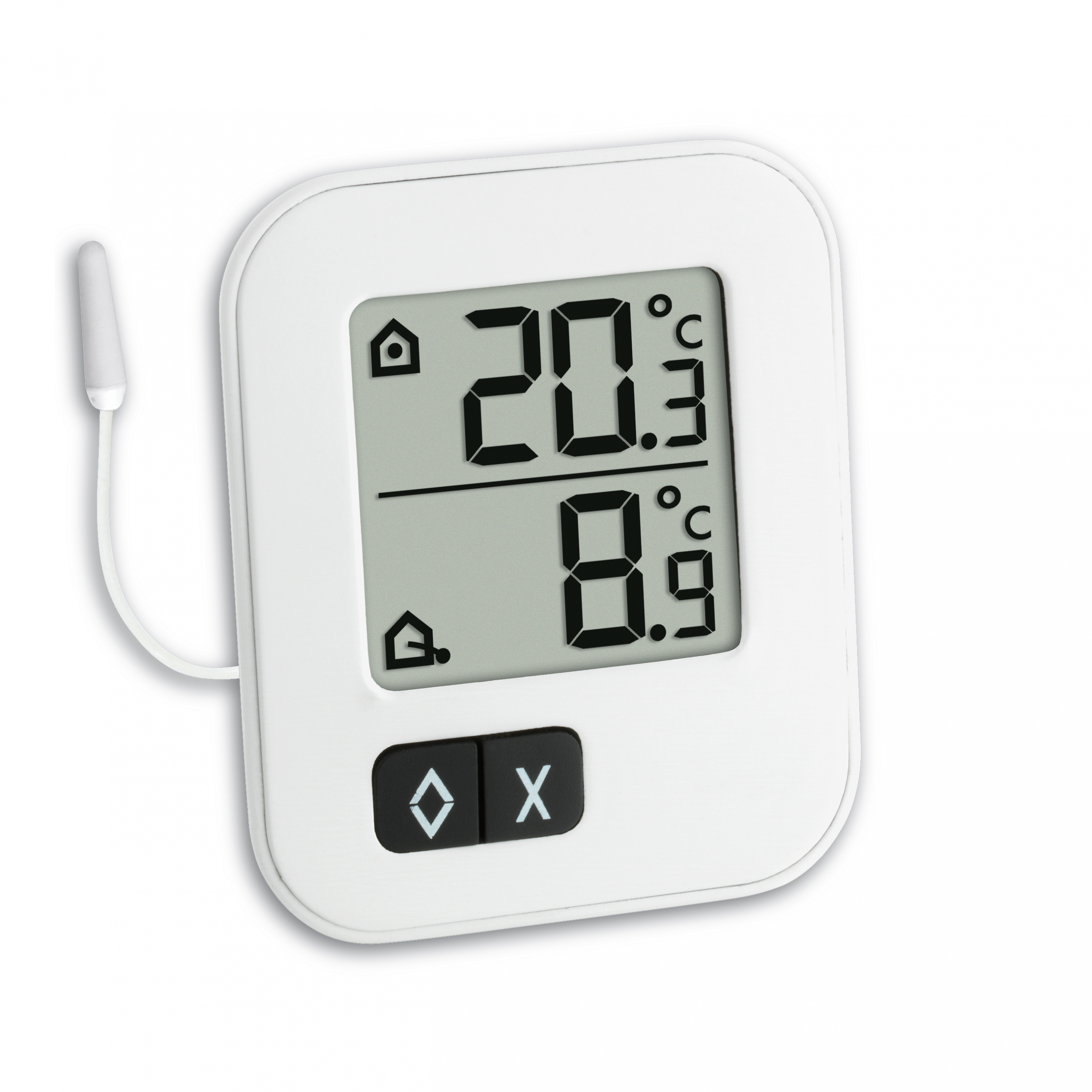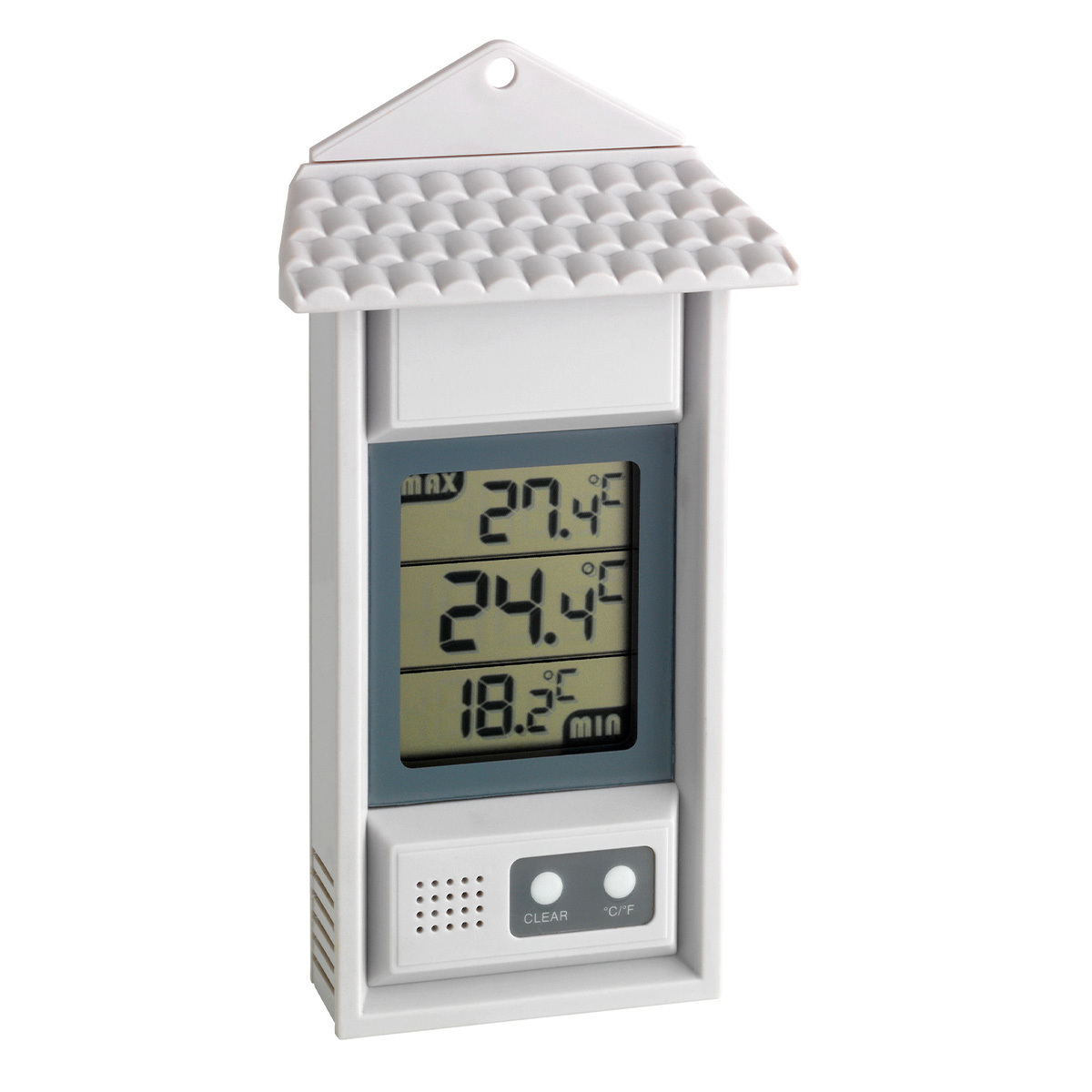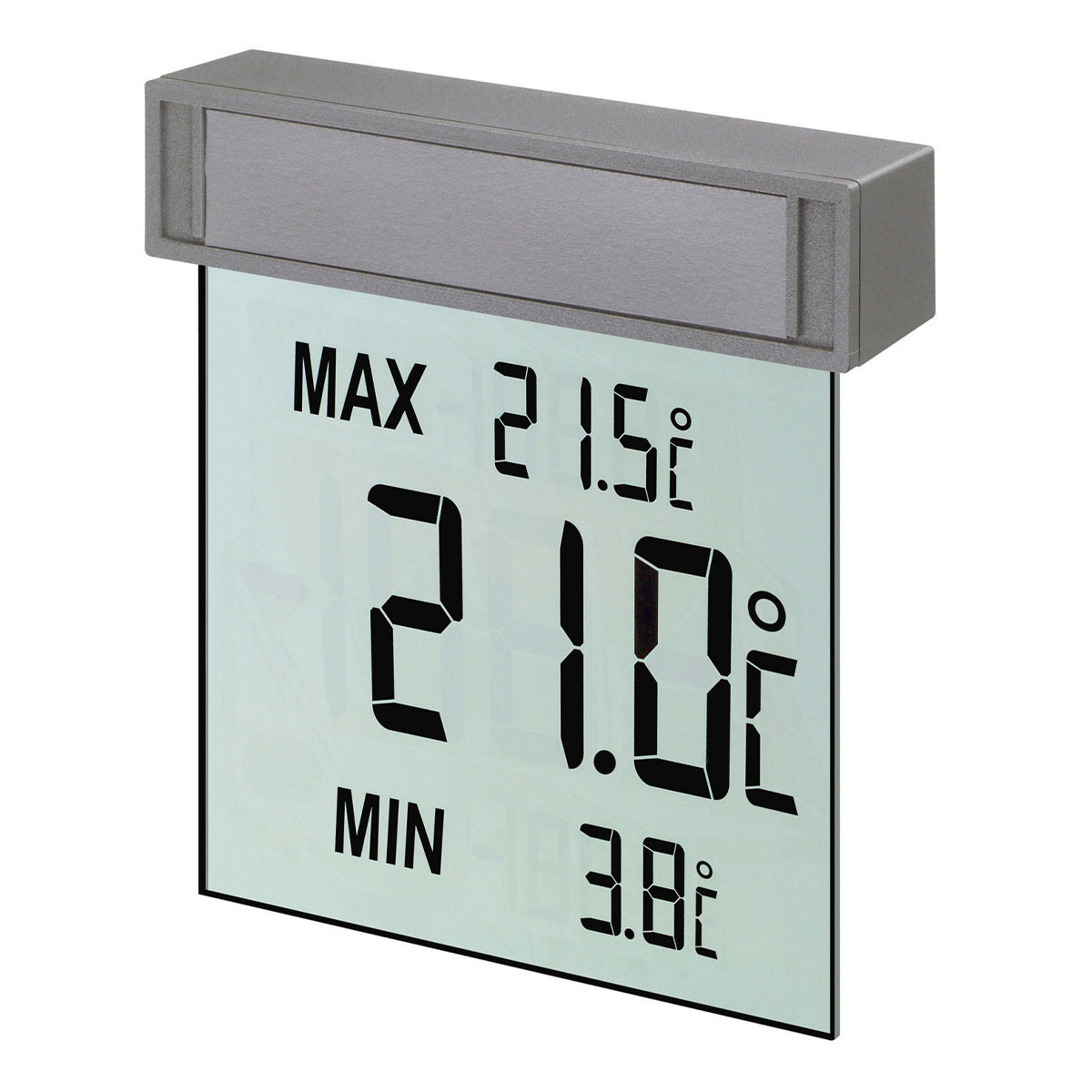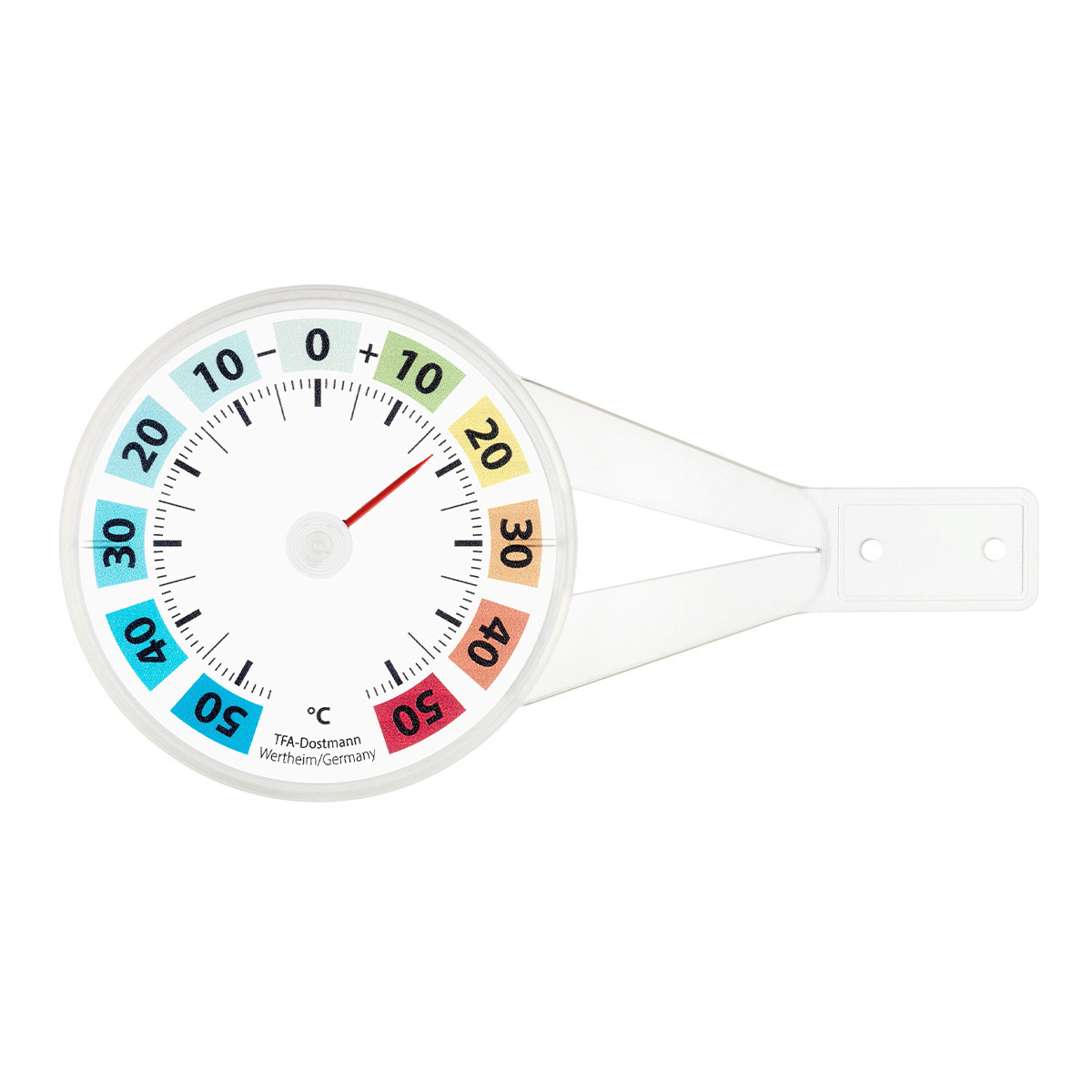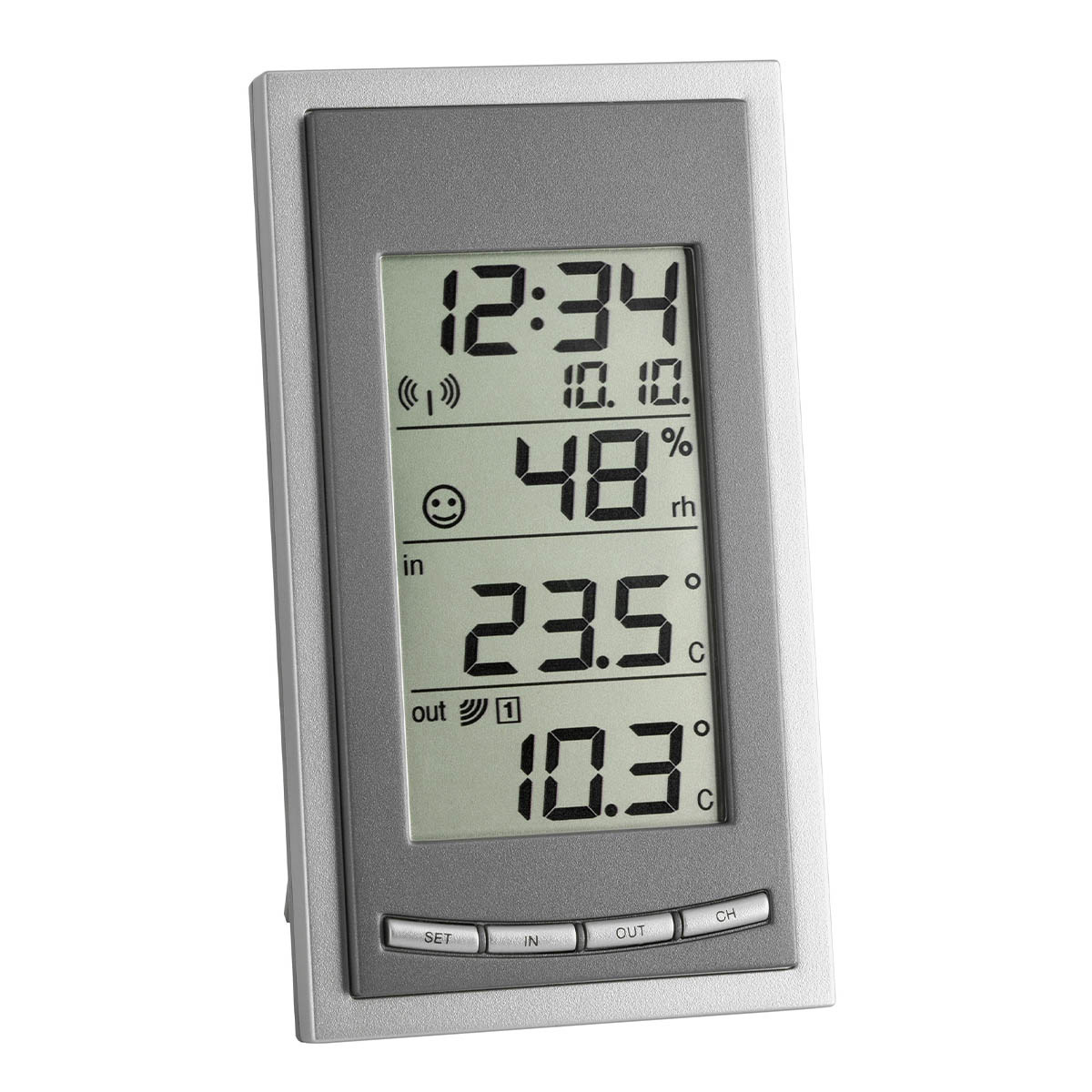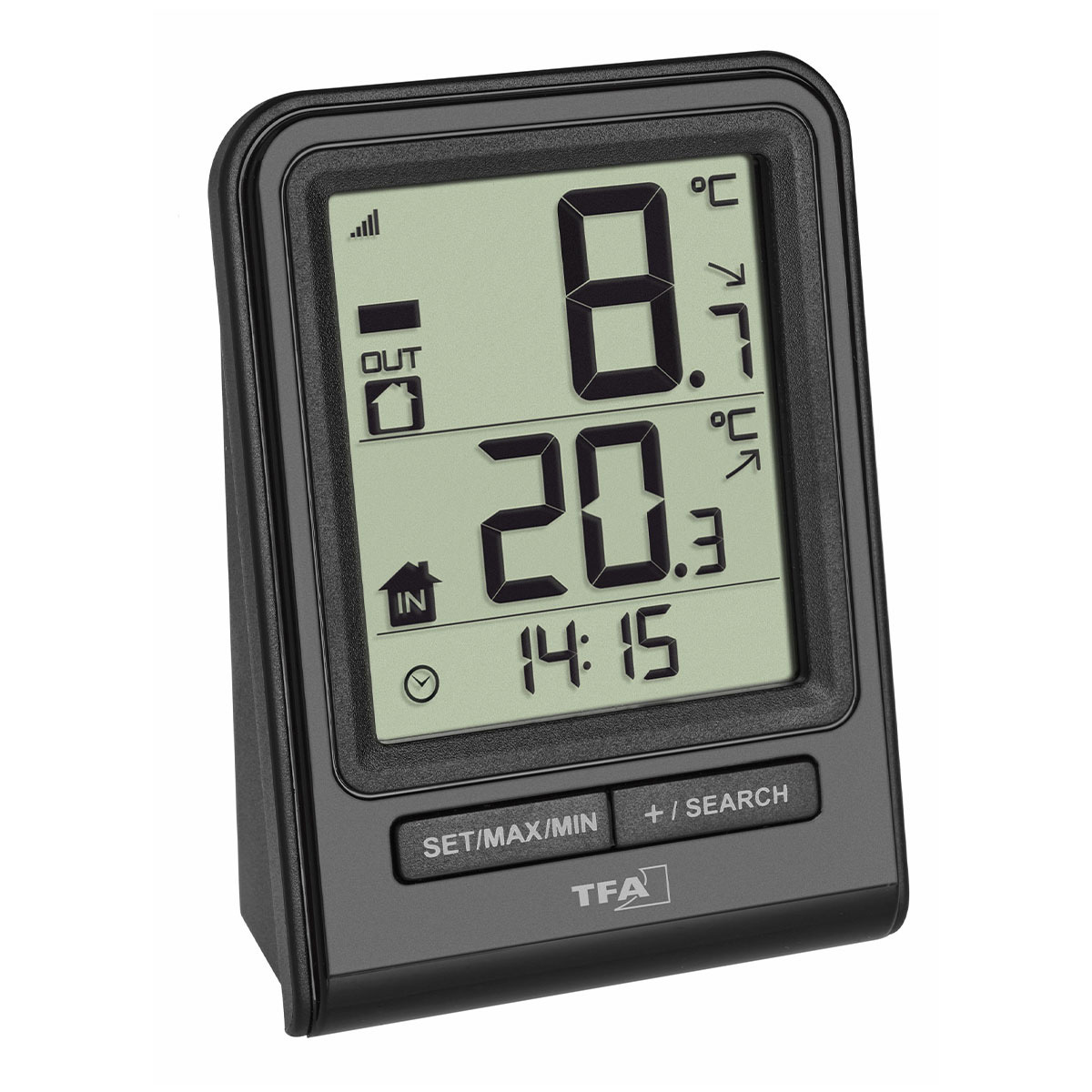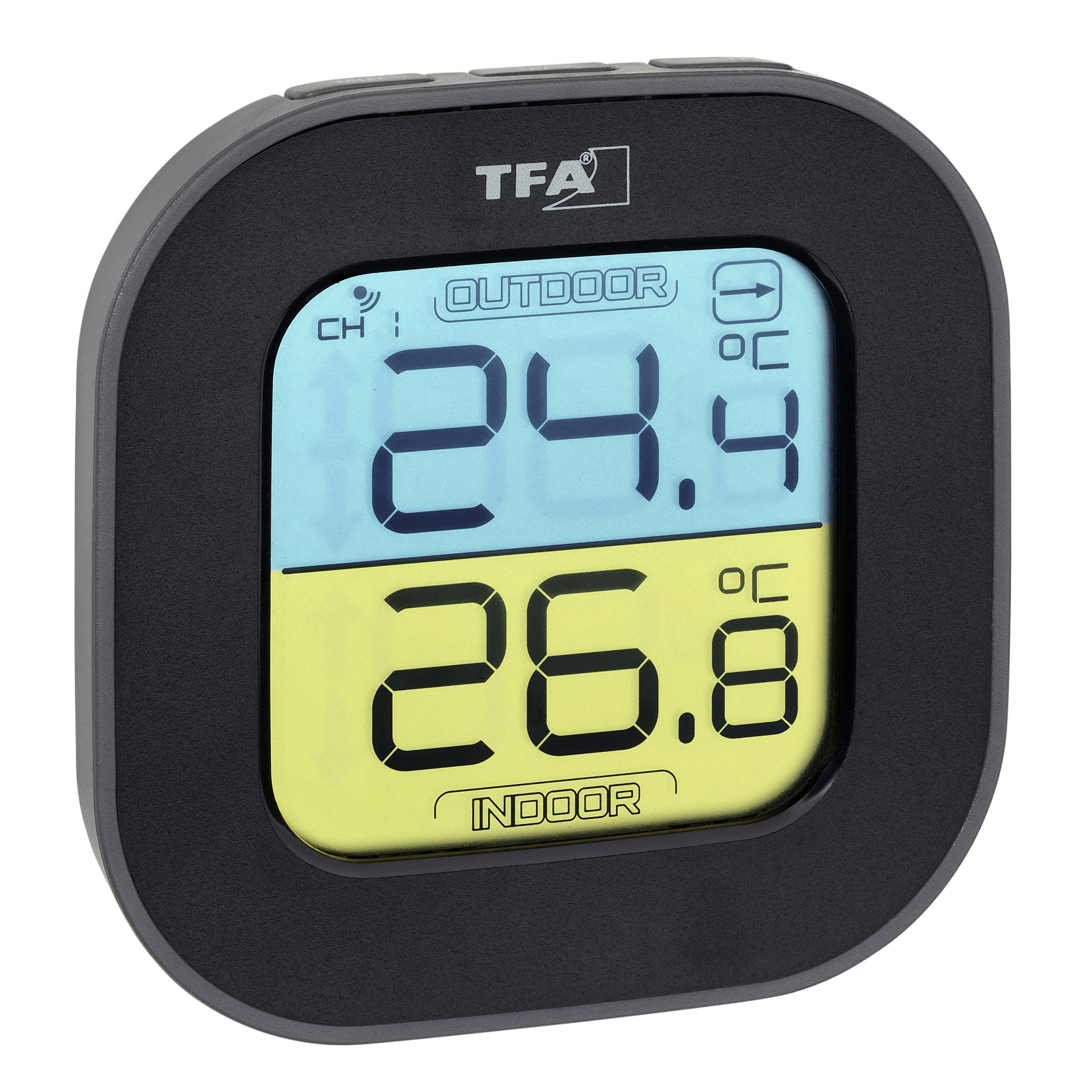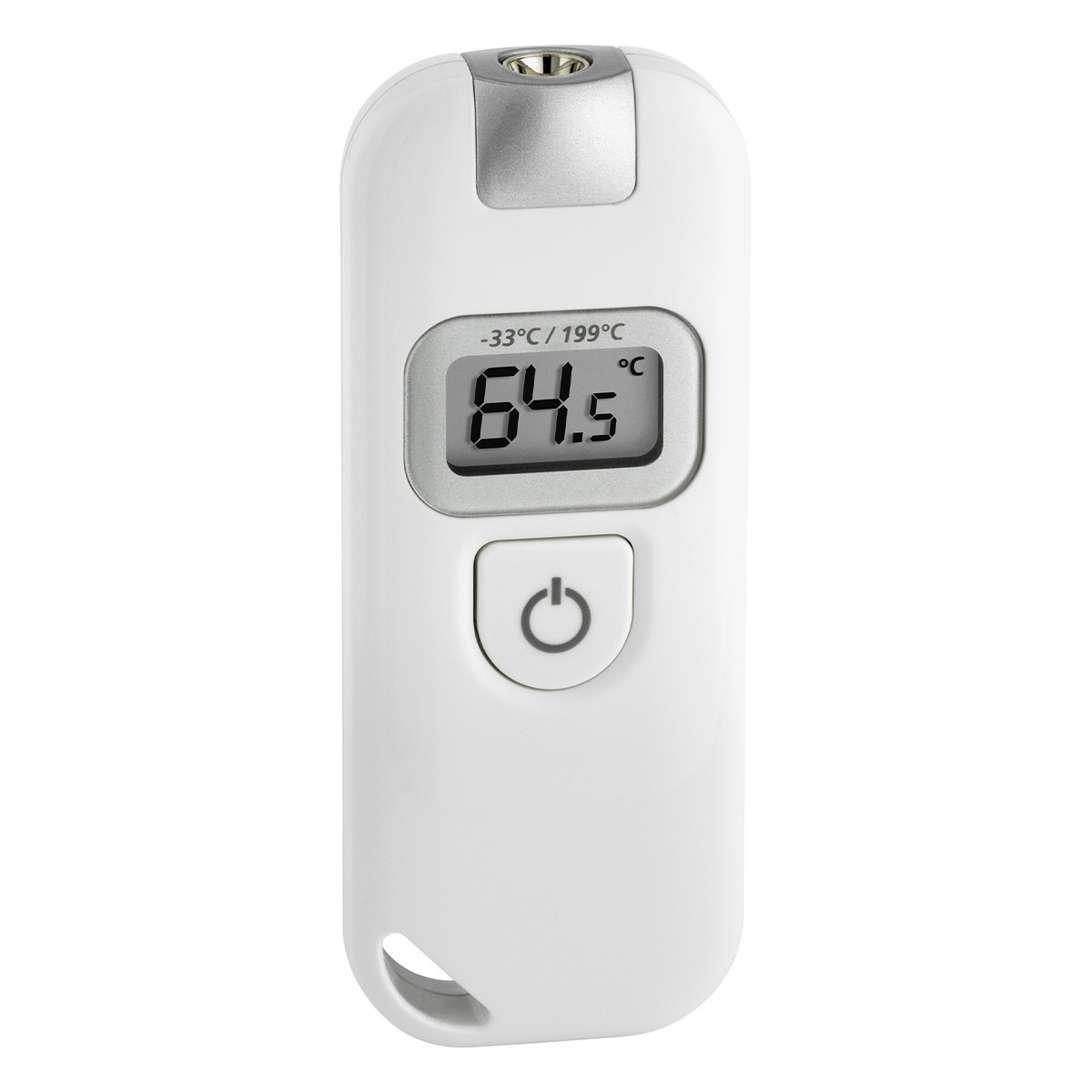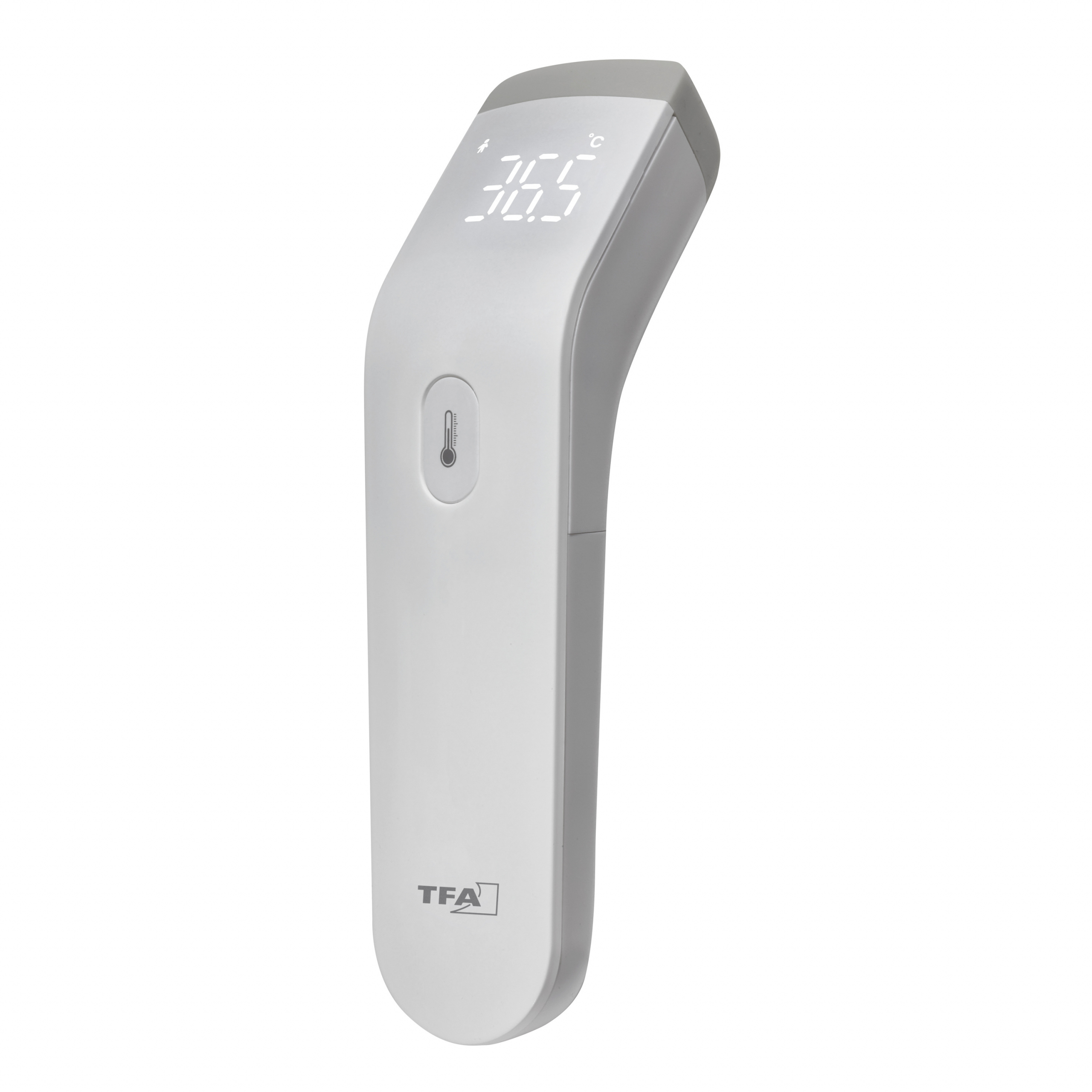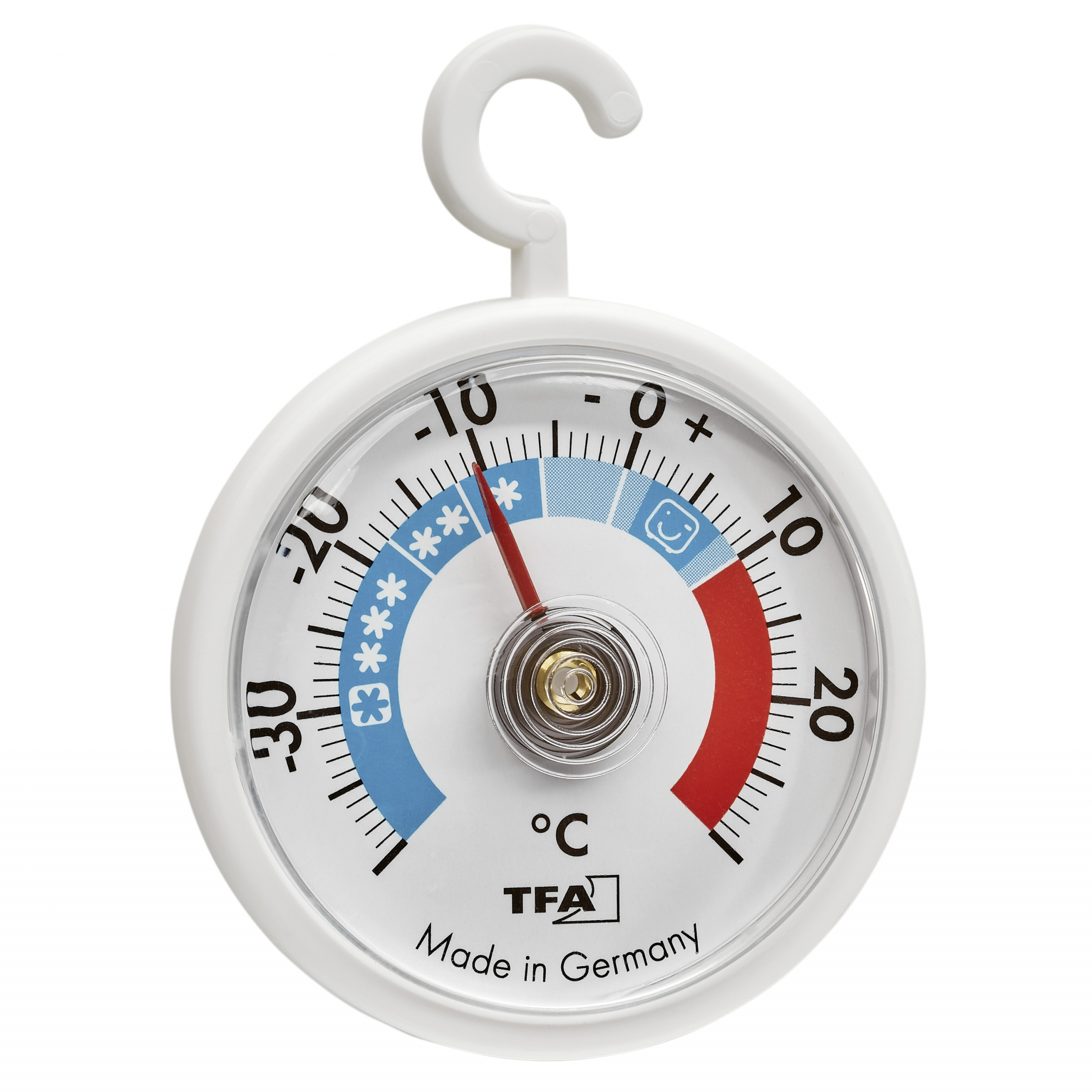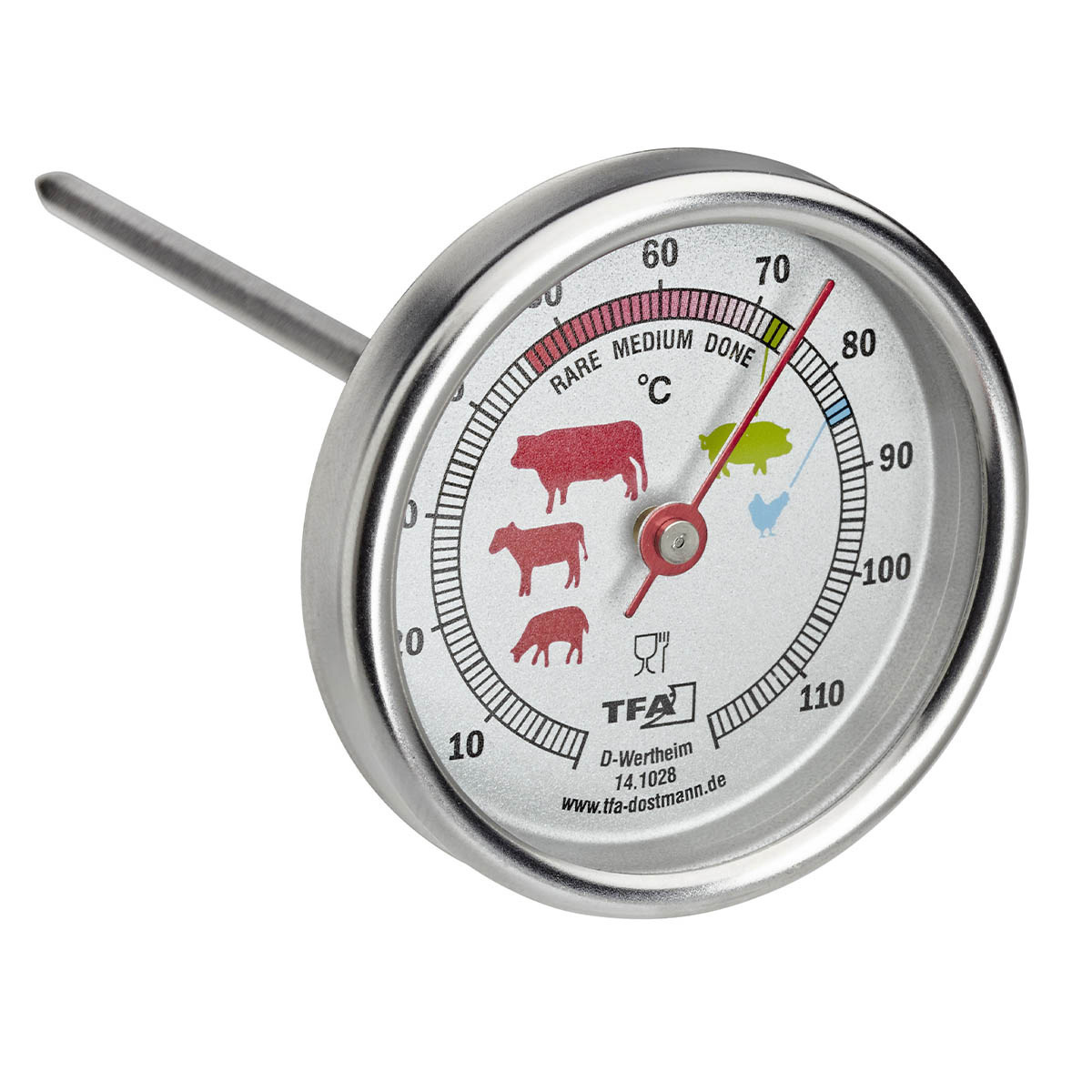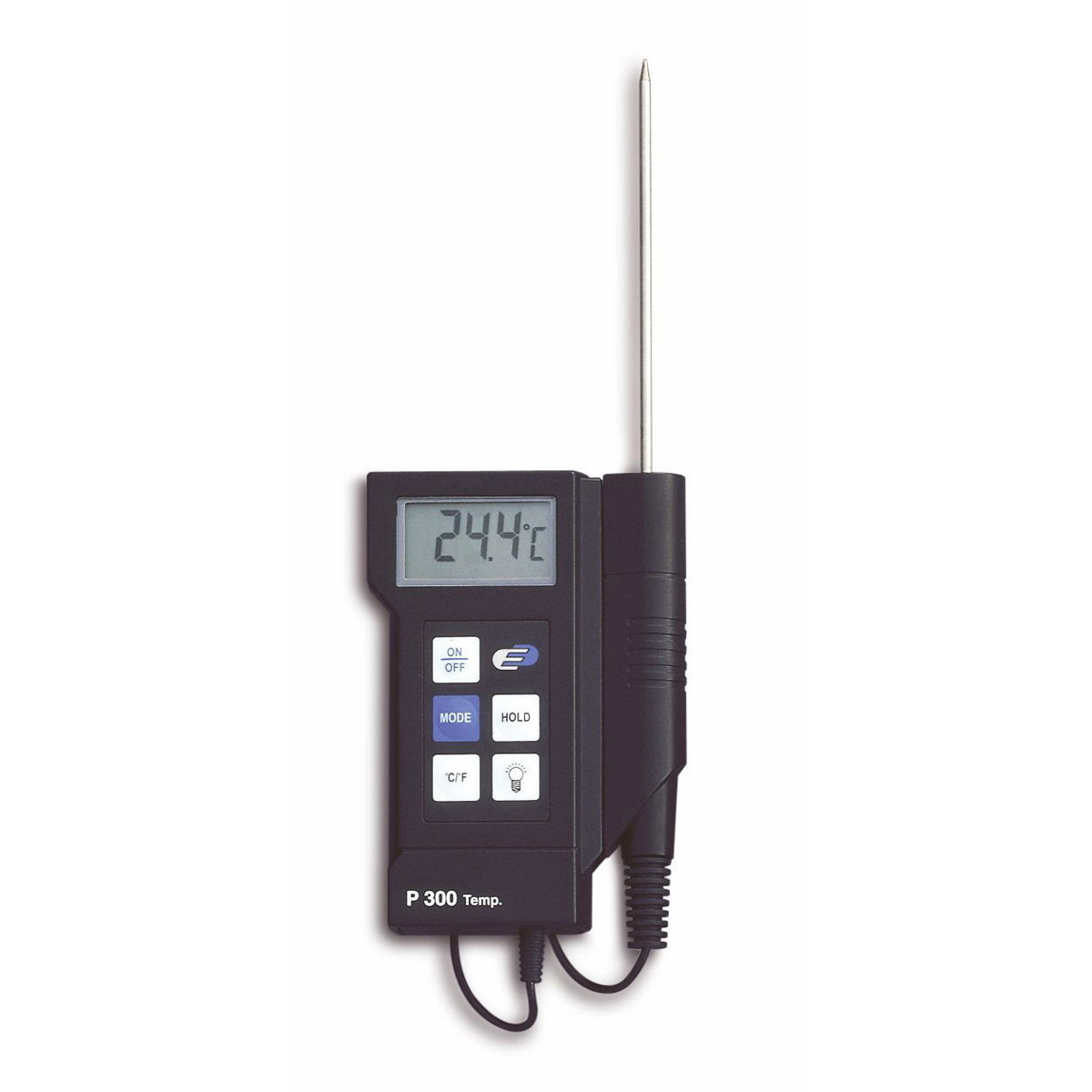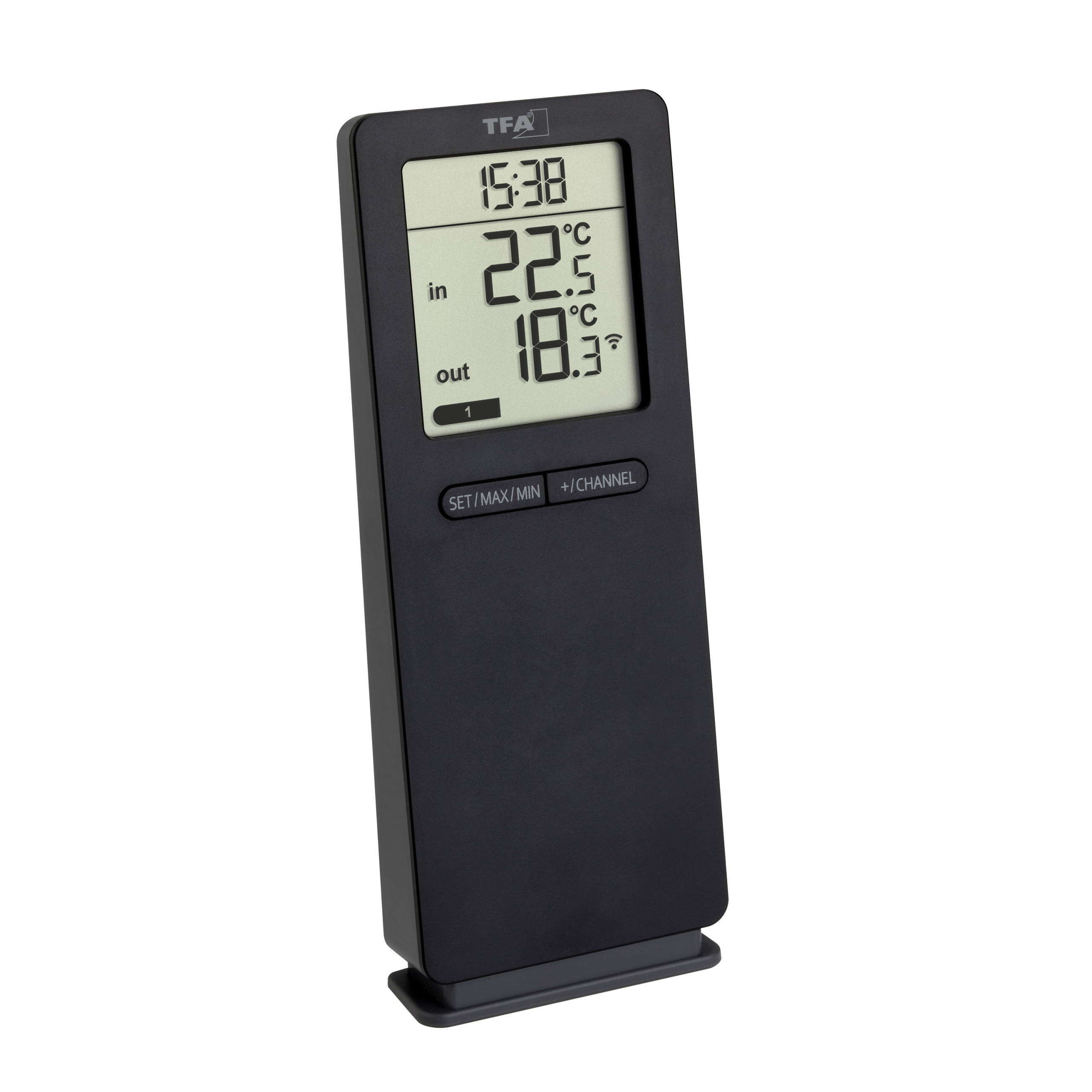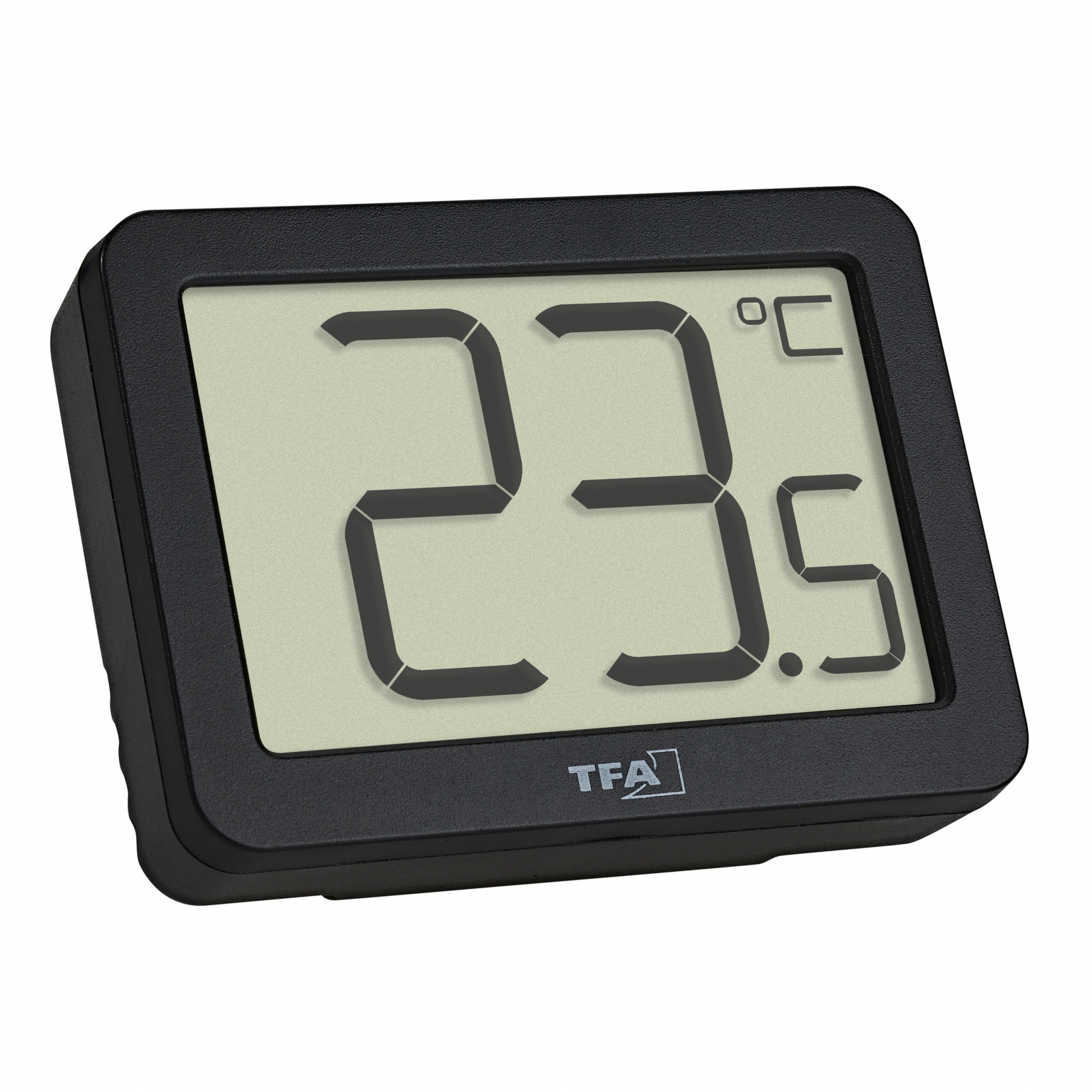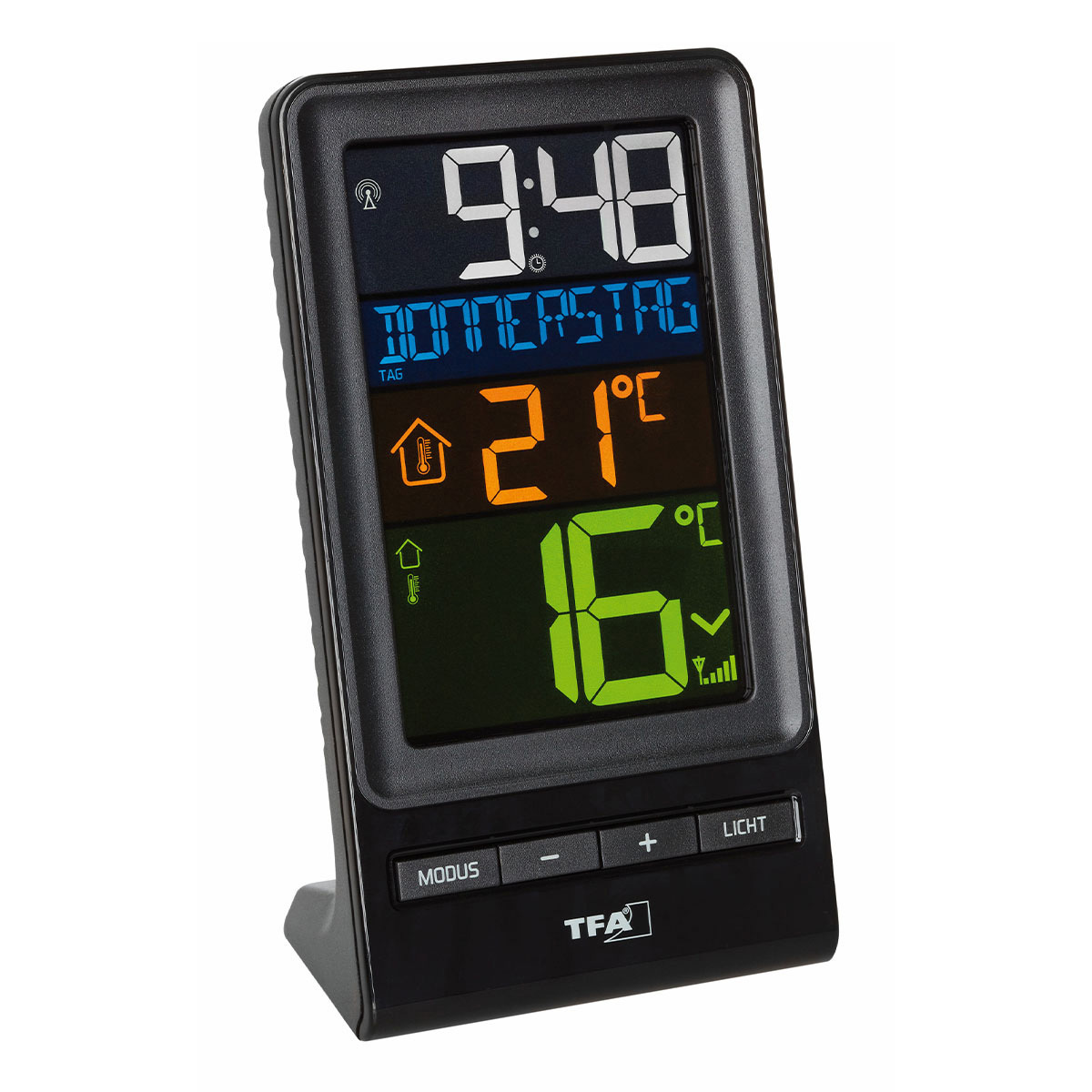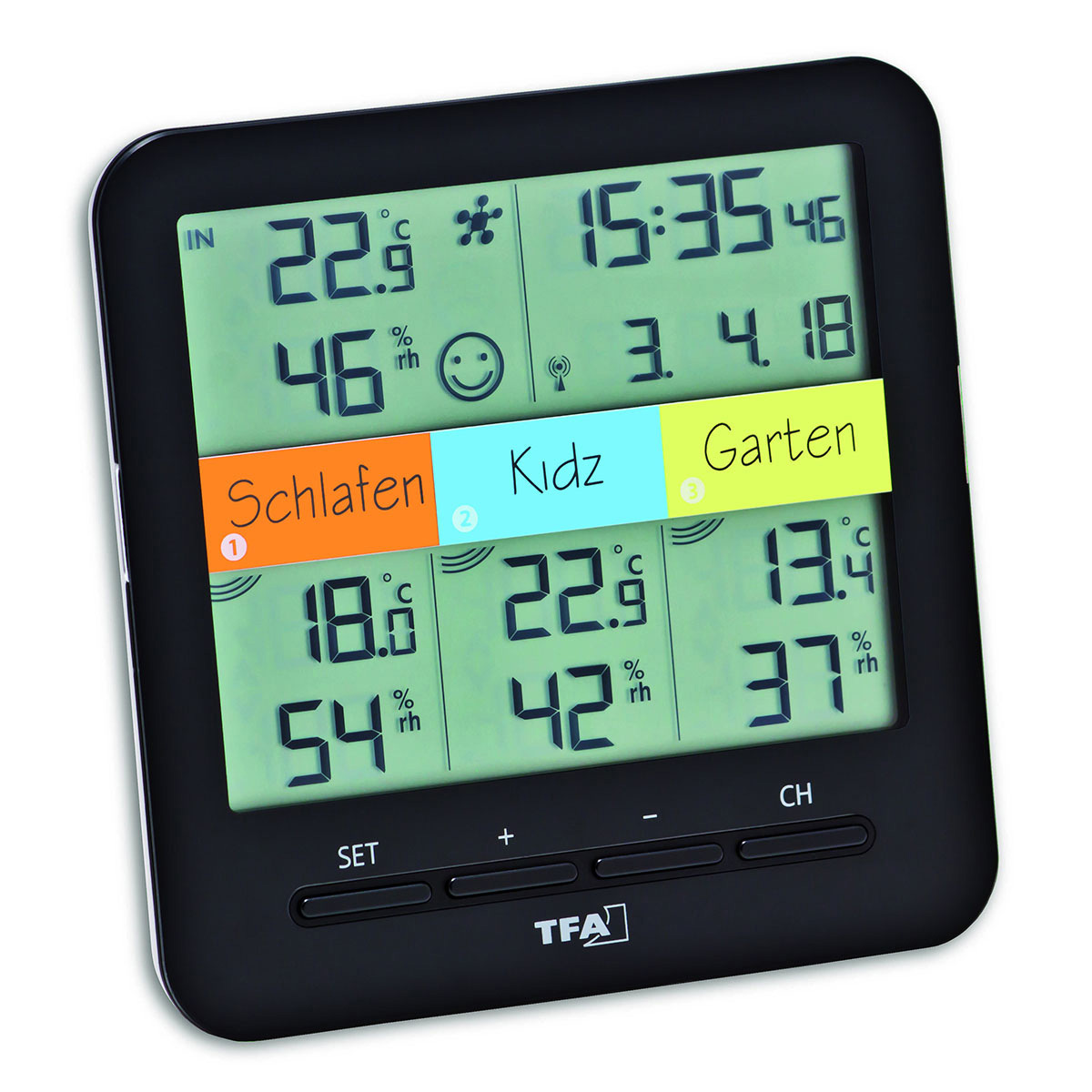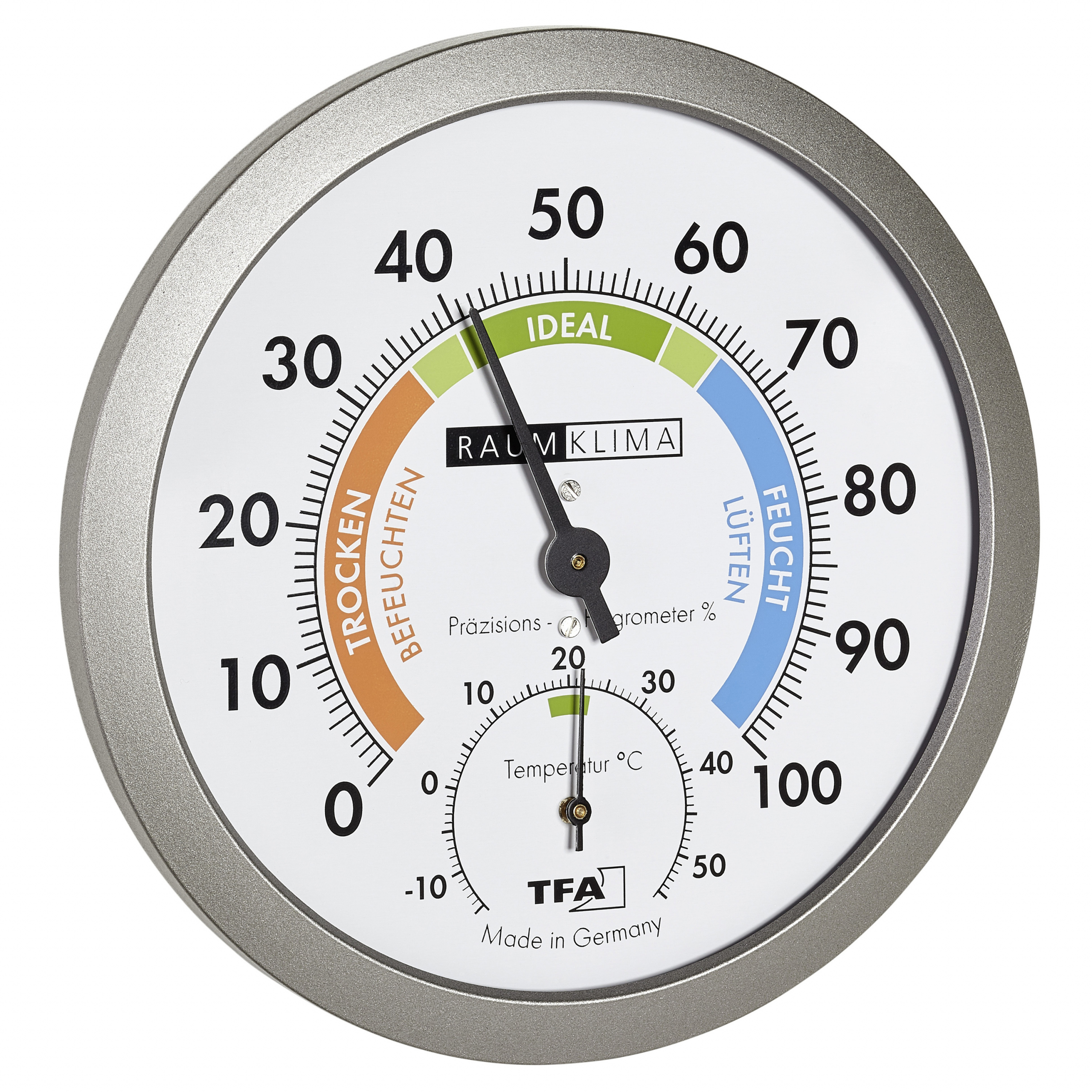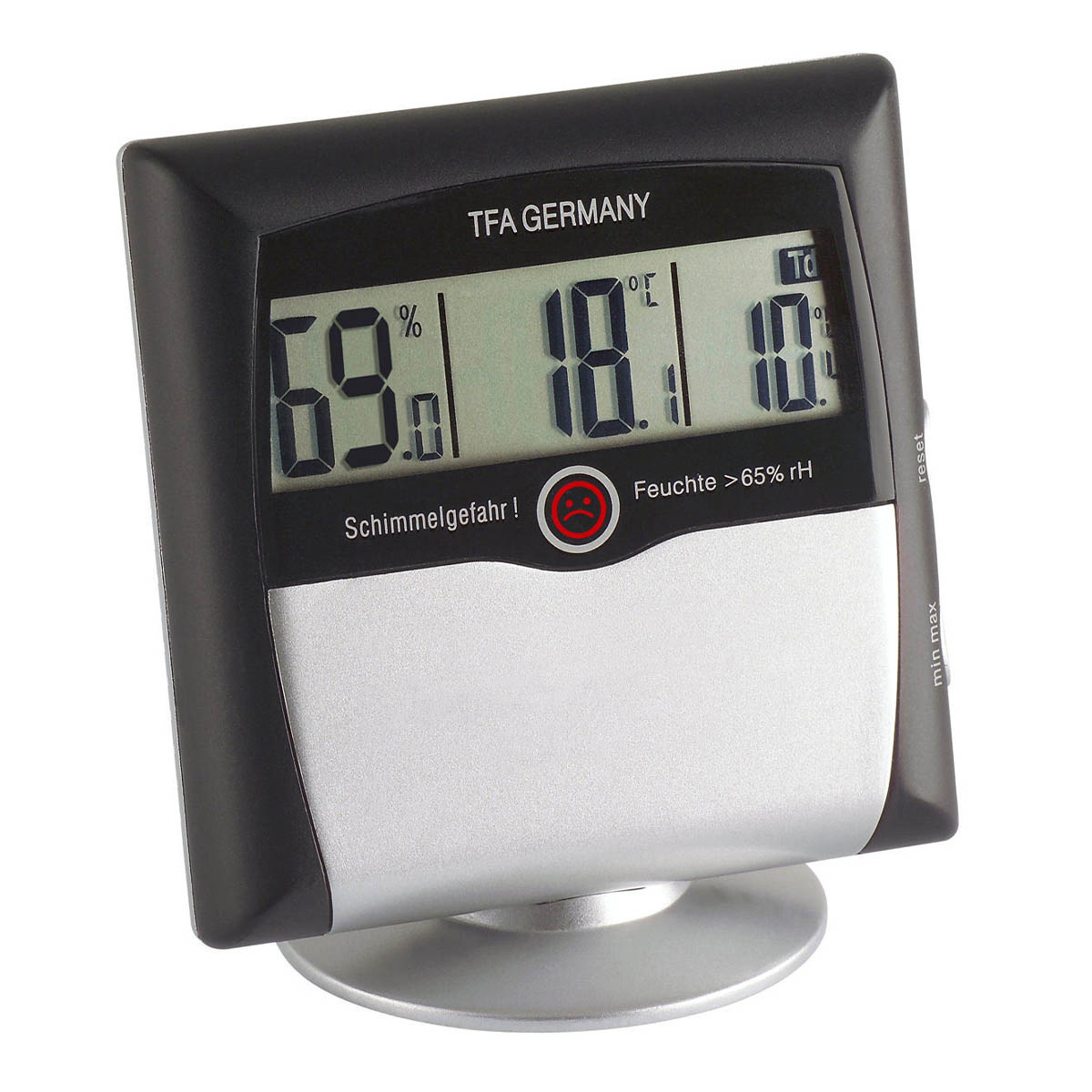A thermometer is an instrument for measuring temperature. Mechanical thermometers use liquids or solids for this purpose, and these behave depending on the temperature. Digital thermometers measure electrical resistance, which also changes with the temperature.
Temperature is the most important value to be measured after time. Thermometers are used in many areas, such as health, household, garden or laboratory. Would you like to learn more about thermometers or a specific type of thermometer? Then read our thermometer guide.
If you would like to buy a TFA thermometer then have a look at our online retailers.
All thermometers of TFA Dostmann
Wireless thermometers
Digital thermometers
Analogue thermometers
Window thermometers
Garden thermometers
Digital garden thermometer with solar powered display lighting AVENUE
Item number: 30.2026
+ 360° VIEWAll products of Thermometers
Thermometer guide
Thermometers are used to determine the temperature. They are among the most important and oldest measuring instruments for weather observation and indoor monitoring. They are also used in many other areas.
Which thermometer types there are, how to measure optimally with a thermometer and what is important when buying a thermometer, you will learn here.
Which different thermometers are available?
Which thermometer type is the right one? That depends on what it will be used for.
Thermometers are subdivided according to their measuring technique, i.e. into digital and analogue thermometers. Moreover, they also differ in what they measure exactly. Examples of measured variables are ambient air, surfaces, water temperature or the core temperature of meat. Thermometers are also available in combination with other measuring instruments such as weather stations, alarm clocks or thermo-hygrometers.
Weather station – the all-rounder
If you want to get more info, then you not only want to measure temperature, the weather station is exactly what you need as an all-in-one solution. In addition to temperature, a weather station also measures other weather data such as humidity or air pressure, and even gives forecasts about the weather development.
Digital thermometer
With digital thermometers, the temperature value is recorded by an electronic sensor and is shown on a display. The temperature is calculated by the changing electrical resistance.
A digital thermometer requires a battery and is usually only suitable for indoor use. In some models, the outside temperature is measured with a sensor cable that is led outside via the window frame.
The following digital thermometers are available for indoor and outdoor use:
A digital window thermometer measures the outside temperature as well. The window thermometers are also available in a classic analogue version. They are attached to the outside of the windowpane and their temperature values can be read from the inside.
Wireless thermometer
A wireless thermometer receives the outdoor temperature via a separate transmitter, which is placed outside and transmits the temperature by radio. The room temperature is measured via an internal sensor in the main unit. Depending on the model, one or more transmitters can be connected to the main unit to monitor other locations both inside and outside.
Infrared thermometer
An infrared thermometer measures the surface temperature without touching the object. Instead, these thermometers determine the temperature from the infrared radiation emitted by the measured object. The non-contact measuring method offers many advantages because it is extremely fast and there is no touch on the object to be measured.
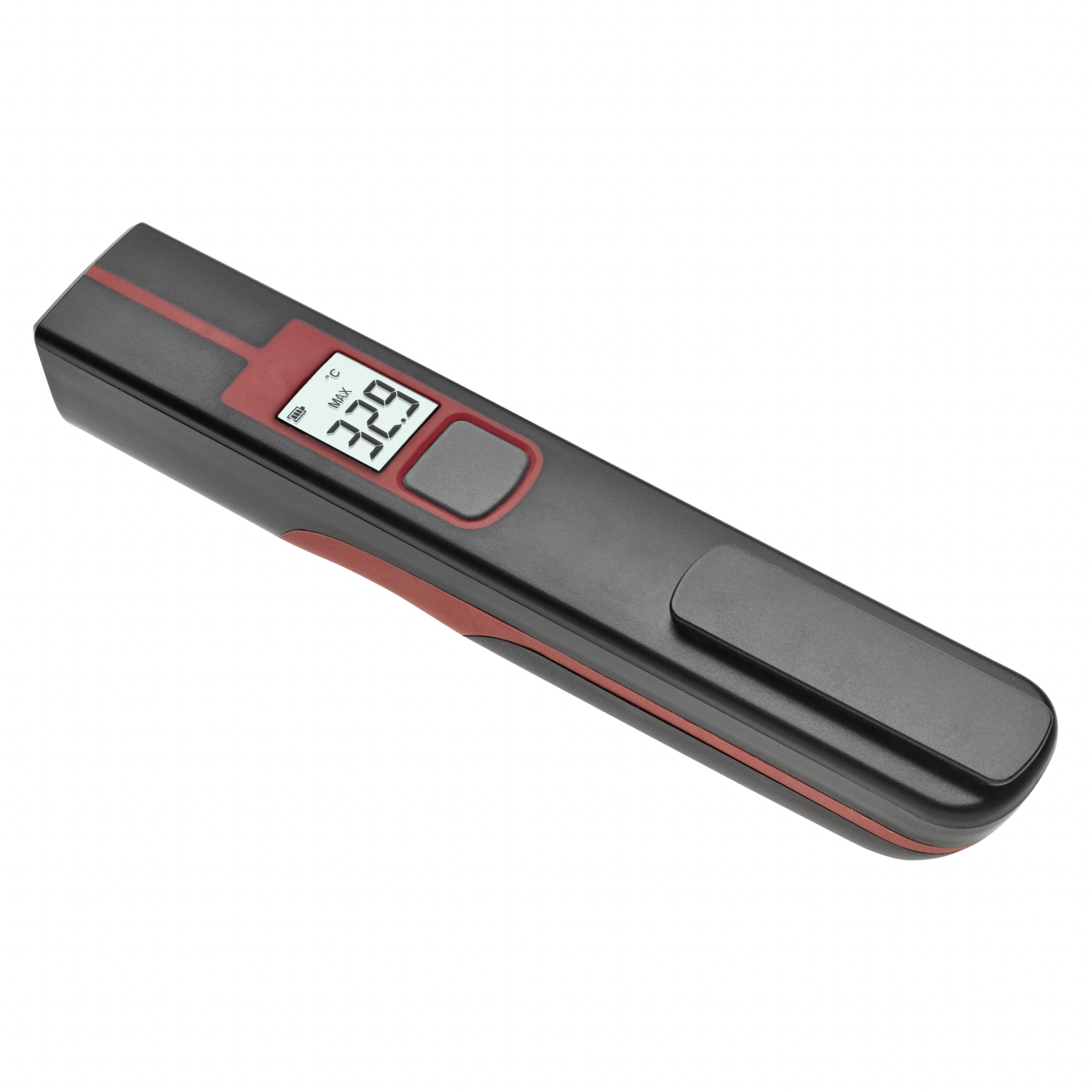
Infrared Thermometer CIRCLE-PEN
Item number: 31.1139
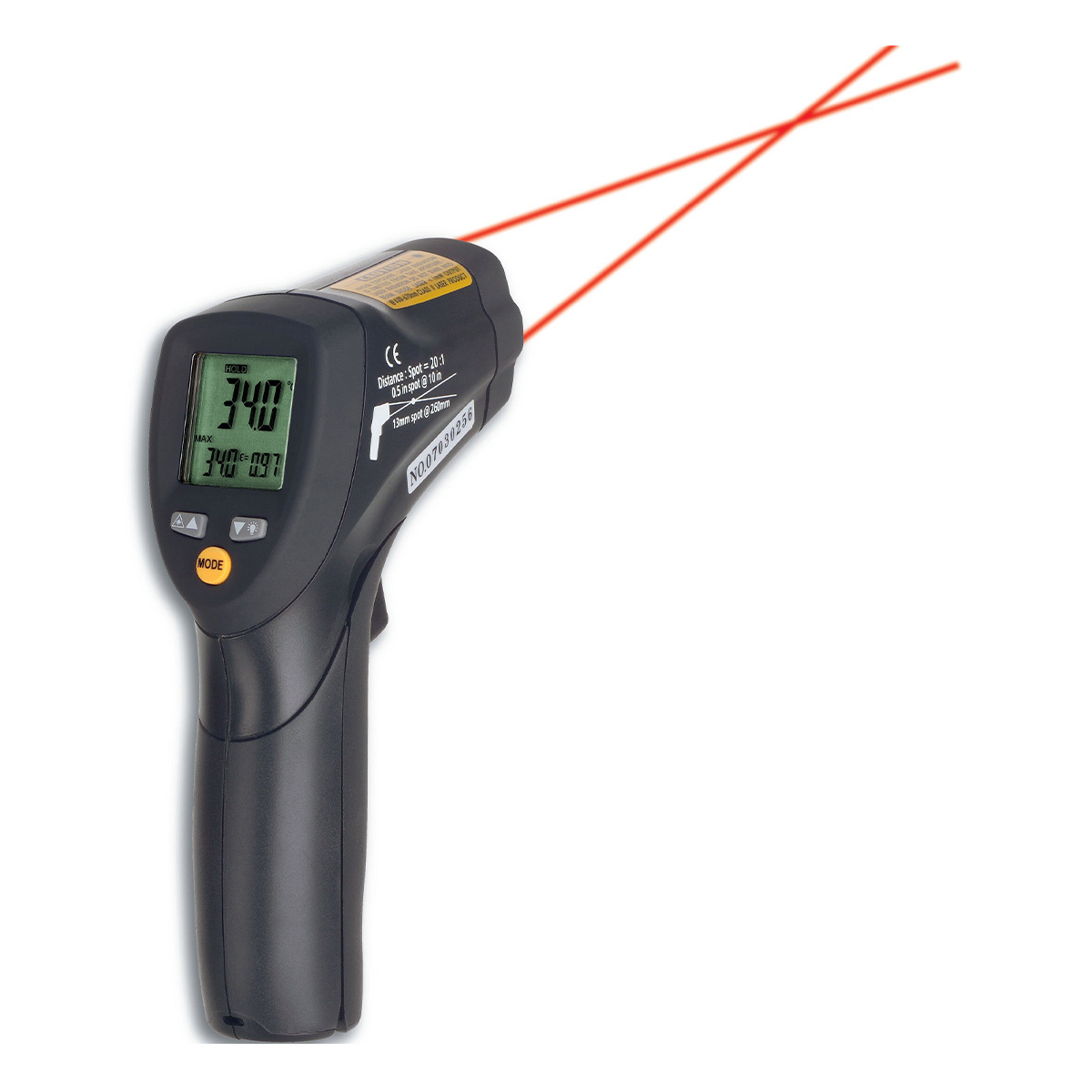
Infrared thermometer SCANTEMP 485
Item number: 31.1124
Thermometers for specific applications
Thermometers are not only important instruments for industry and science but also indispensable for private use. The thermometer helps in numerous situations such as measuring body temperature, preparing food or gardening.
Thermometer for measuring body temperature
A medical thermometer is a thermometer for measuring body temperature and can be found in virtually every household. The temperature sensors of the clinical thermometers usually have a measuring range with values from 34 °C to 42 °C with a scale of 0.1 °C.
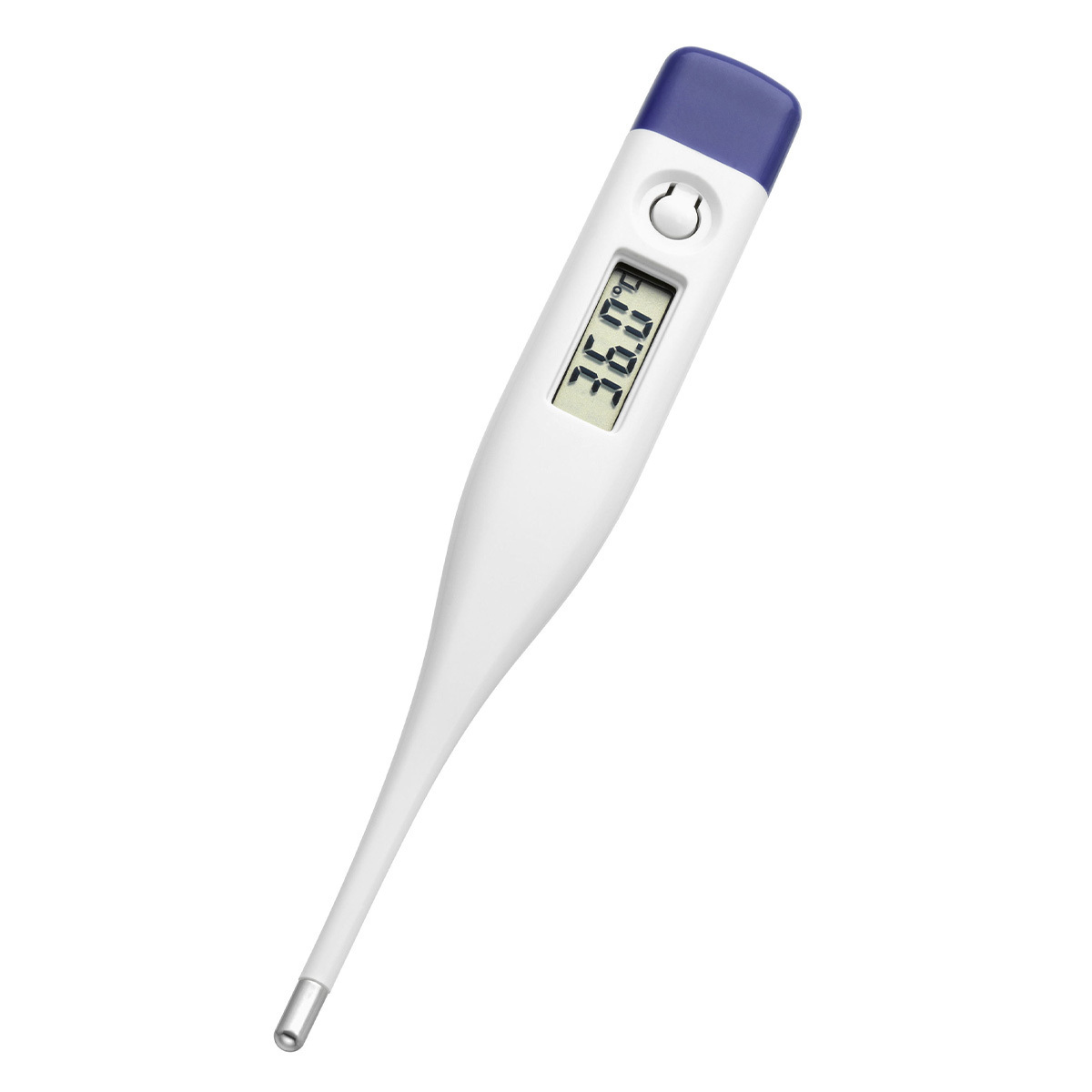
Electronic medical thermometer
Item number: 15.2015
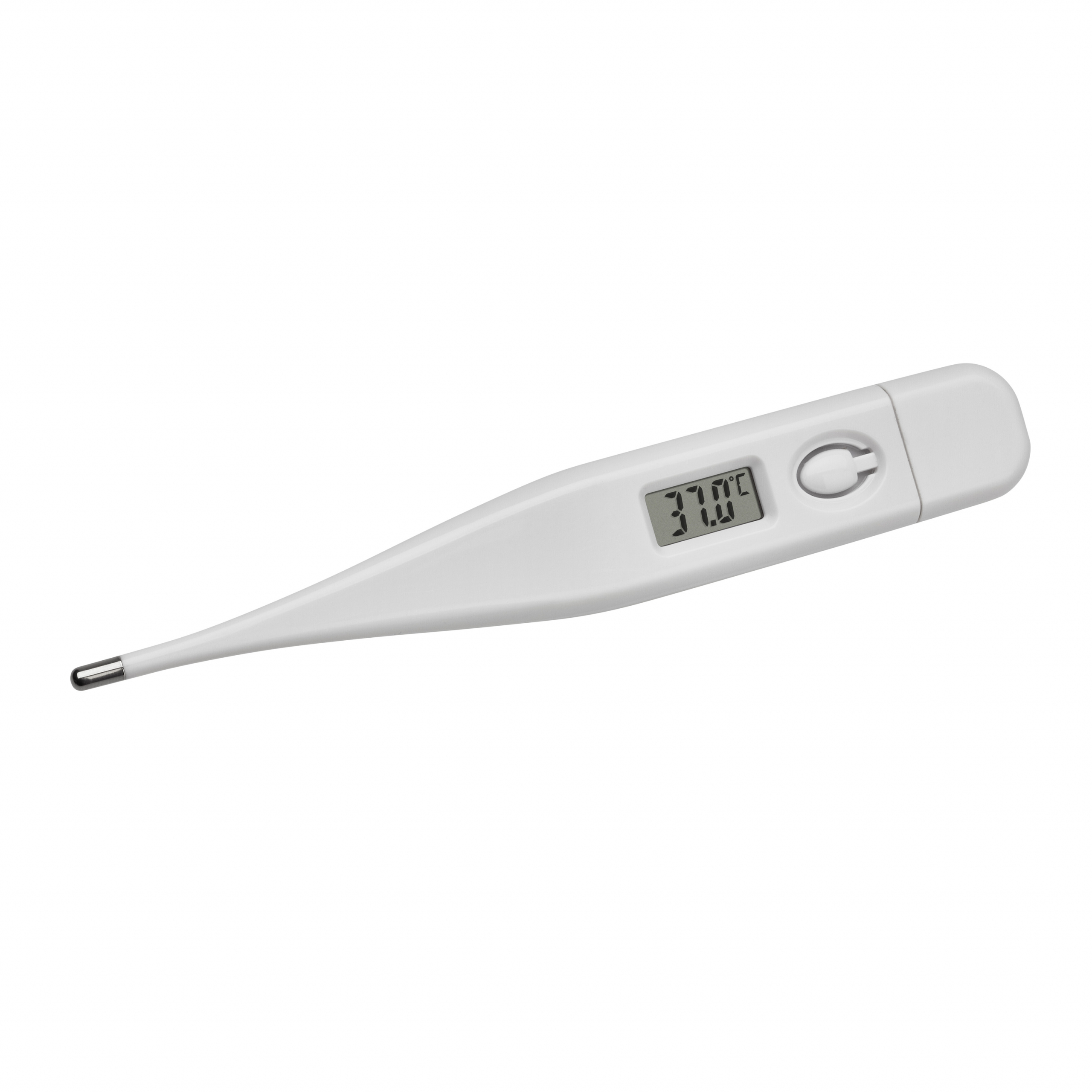
Electronic medical thermometer
Item number: 15.2008
Thermometer for the kitchen & household
The kitchen thermometer is the ideal helper in the kitchen. Even Michelin star chefs don’t just rely on the impression you get when you look into the pot or pan. Rather, they know the temperatures of meat and vegetables in order to get them perfectly cooked. Even with chocolate, pralines or confectionery, you should keep a close eye on the melting point and processing temperatures.
A freezer-fridge-thermometer is used to check cooling and freezing temperatures. These thermometers guarantee that delicate foods such as fish, meat and dairy products are properly chilled and prevented from premature spoilage.
A meat thermometer or roast or grill thermometer is used in the kitchen in many ways. It is used for measuring the temperature inside the meat to ensure that the core temperature has reached the ideal cooking point. For some types of meat, such as poultry, it is also important to check that the minimum cooking temperature is maintained in order to eliminate dangerous bacteria such as Salmonella.
This type of thermometer measures the core temperature. Then meat, fish or even vegetables can be cooked perfectly and “to the point”. This applies whether the food is being cooked in the oven or grill, on the hob or for barbecue.
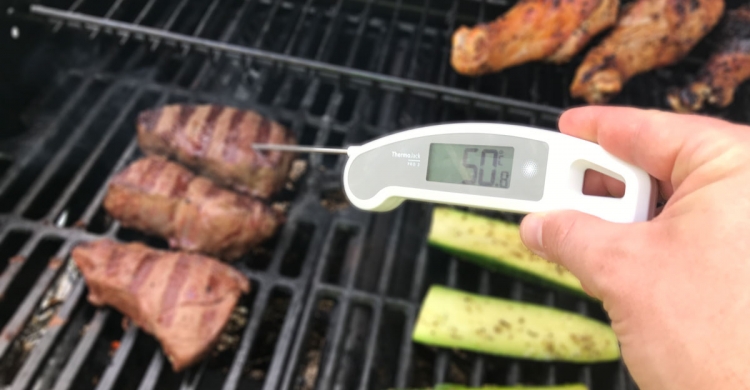
Measuring the temperature of food with a thermometer
Meat thermometers come in different models and with distinctive features. Retractable probe thermometers allow a spot check, but the meat needs to be briefly removed from the oven or barbecue grill. These models are universally applicable in the kitchen, for example, to control the temperature of baby food or of other paste-like and liquids such as soups or broths.
Other models are heat-resistant and can remain in the oven barbecue during the entire cooking time. The digital version is made of a penetration probe with a heat-resistant cable. The display unit is kept outside the oven and gives an alarm when the target temperature is reached.
Finally, there are oven thermometers that measure the internal temperature of the oven and combination devices that measure the core temperature and the internal temperature in the oven simultaneously.
Thermometer for the garden
Whether you are a passionate gardener or a hobby meteorologist – anyone who wants to know about the climate in their own garden needs a garden thermometer. Garden thermometers measure the outside temperature. This information helps to create and maintain an ideal environment for flowers, fruit trees, vegetables, green plants, and herbs.
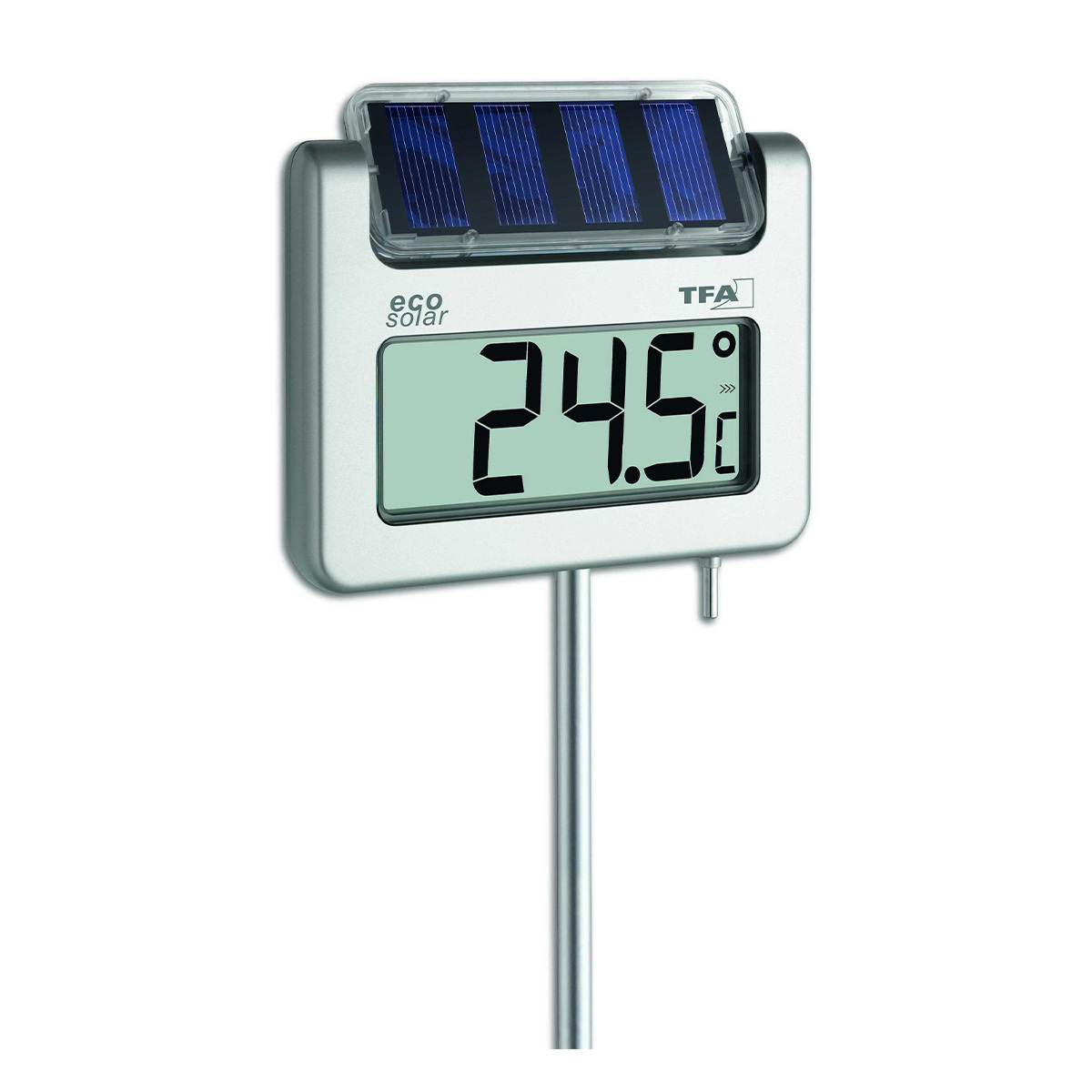
Digital garden thermometer with solar powered display lighting AVENUE
Item number: 30.2026
+ 360° VIEW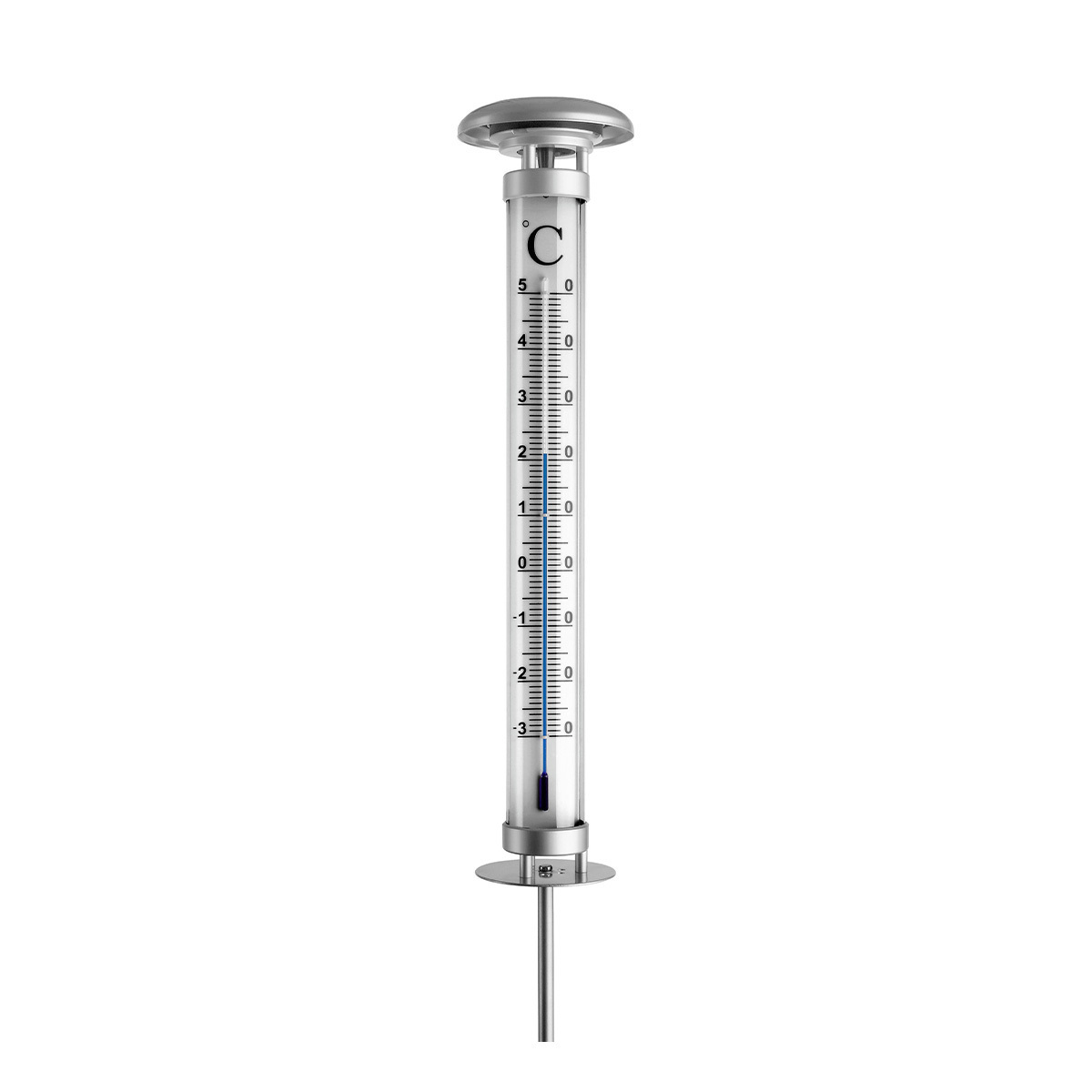
Analogue garden thermometer SOLINO
Item number: 12.2057
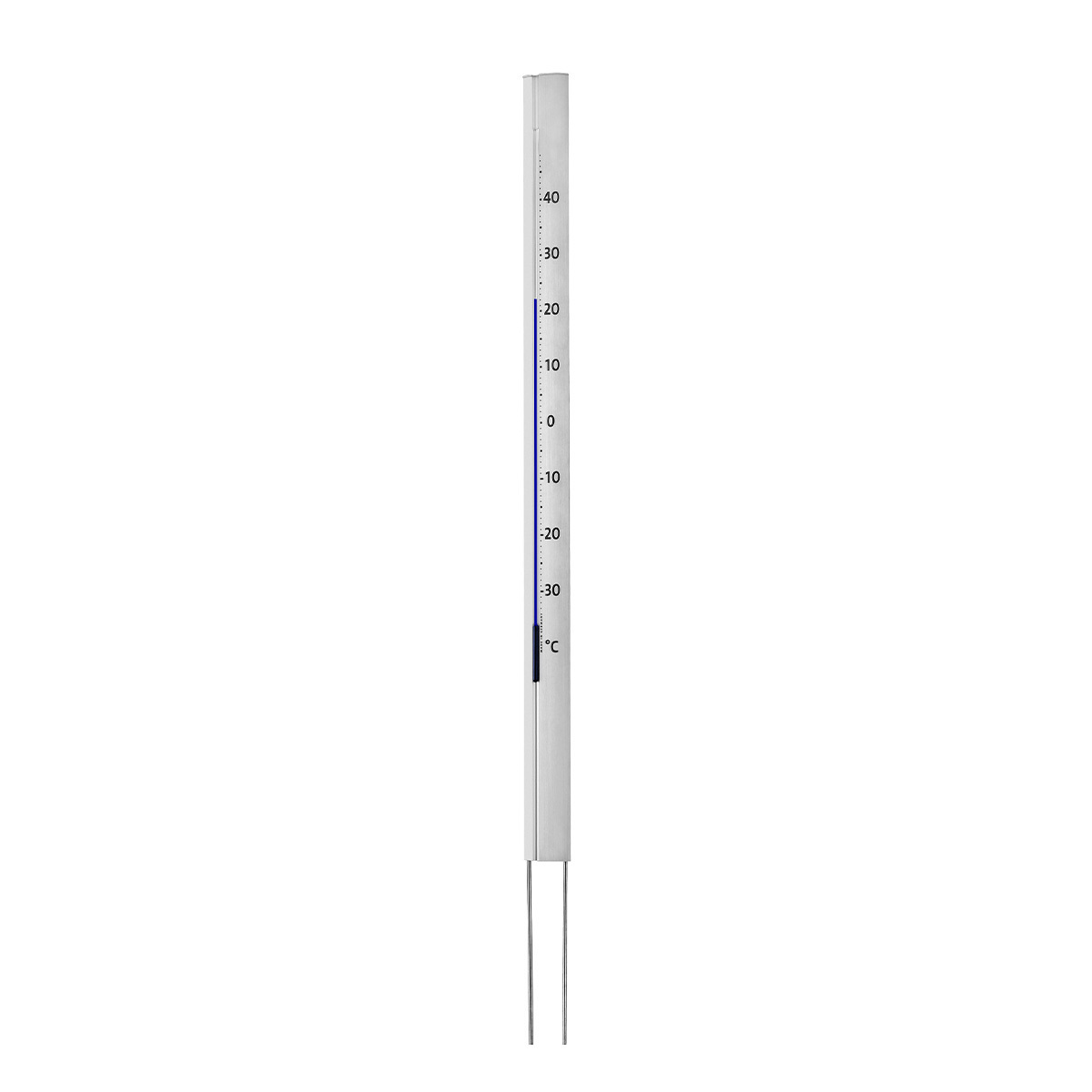
Analogue Design-Garden Thermometer CENTRAL PARK
Item number: 12.2005
The garden thermometer informs you when temperatures are rising or when there’s a risk of frost. Maxima-Minima thermometer can also be used in the garden. These thermometers show the current temperature as well as the highest and lowest temperatures.
With the pool thermometer, you keep an eye on the water temperature in the pool, pond or swimming pool. This allows you to create the ideal temperature for bathing. This is also important for the dosage of swimming pool chemical products. If the thermometer is used in the pond or swimming pond, the ideal temperature for fish and plants can be controlled.
Thermometer for professional use
Many thermometers are used in the professional field. Professional thermometers include data loggers, probe thermometers, infrared thermometers (pyrometers) and thermocouple measuring devices or thermocouple sensors.
In the laboratory, the temperature of liquids can be measured quickly and easily with professional thermometers. Professional thermometers are also used to monitor stored goods. Here it is particularly important to control the correct temperature in the case of perishable food or medicines. A data logger stores the temperature values for a certain period of time and can then be readout.
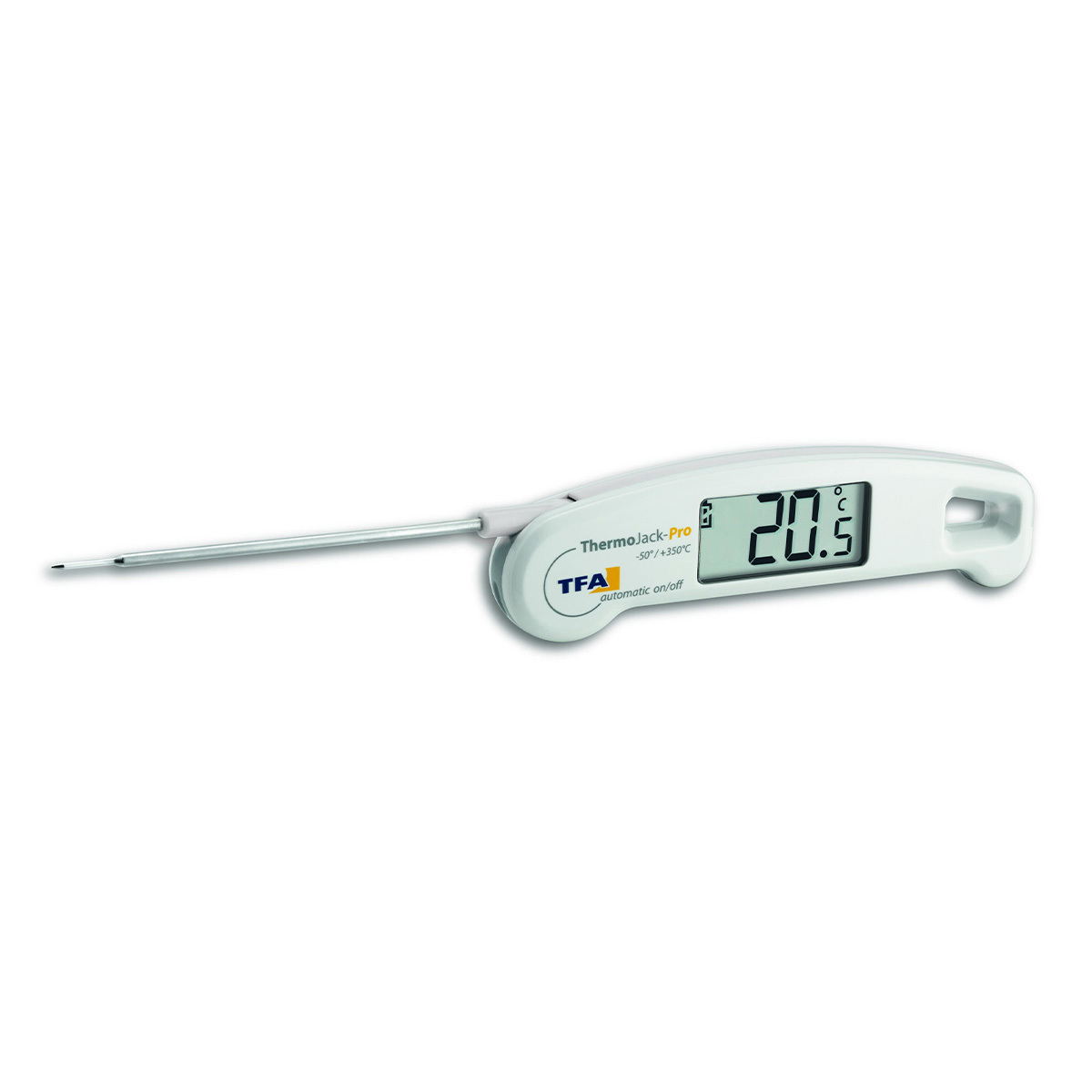
Digital probe thermometer THERMO JACK PRO
Item number: 30.1050

Infrared thermometer SCANTEMP 485
Item number: 31.1124
Thermometer for measuring the room temperature
A thermometer provides information about the room temperature. Everyone knows from experience – the perception of temperature is individual and often gives rise to conflicts when it comes to the “right” temperature in the office or living room. It is better to measure the actual temperature in the room with a thermometer than to speculate about it.
About a quarter of the energy consumed per year is due to heating. That is why it is important, especially now with constantly rising energy costs, that the individual rooms are heated just right.
For different rooms in the house or flat, there are different temperatures that are ideal for the respective room. For example, the optimal room temperature in living rooms is around 20 degrees. In the bathroom and children’s room, temperatures of up to 22 degrees can be reached; in other rooms, less is often sufficient:
- In the kitchen: the oven and refrigerator already give off heat.
- In the hallway: 16 degrees is sufficient.
- In the bedroom: 17 to 18 degrees ensure a good night’s sleep.
- Unused rooms: need little or no heating, but should not cool down below 15 degrees.
Heating one room less saves energy.
As a rule, lowering the temperature in a room by 1°C saves an average of 5 – 6 % energy.
Also remember to turn down the heating when you are away. Proper ventilation also saves heating costs and is not difficult.
In combination with the SmartHome monitoring WeatherHub or a Wi-Fi weather station from the VIEW product line, you can achieve an even greater savings potential together with intelligent heating thermostats.
Measuring with a thermometer
Measuring temperature is the basic function of the thermometer. The thermometer indicates the current temperature in the measuring range by means of a temperature scale or a digital display. It is usually used to measure how warm or cold the air is. However, with the appropriate devices, you can also measure the temperature of liquids, food or other things.
Which unit is used for measuring with a thermometer?
In Europe and almost worldwide the Celsius scale is used for measuring. The freezing point of pure water is defined as 0 degrees and its boiling point as 100 degrees.
The Fahrenheit scale with a freezing point at 32 degrees is mainly used in the USA. Digital TFA thermometers can often be switched from °C to °F.
Finally, there is the Kelvin scale used in the professional scientific field. Although Kelvin is the legal temperature unit in the EU, Switzerland and almost all other countries, it hardly plays a role in everyday life.
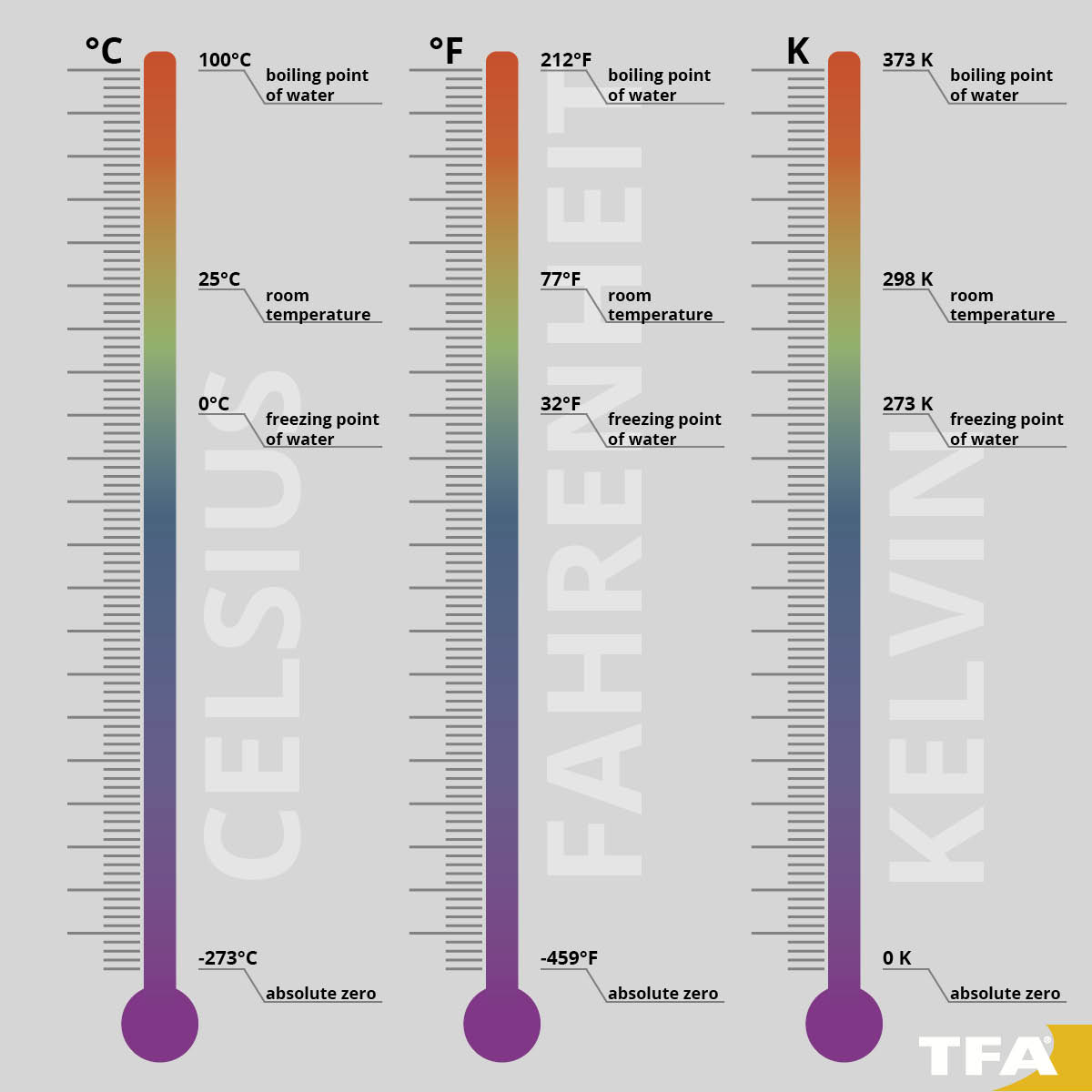
Thermometers measure in the units Celsius, Fahrenheit or Kelvin
How to measure correctly with a thermometer?
It is important to measure correctly with the thermometer to accurately determine the temperature. How to measure depends on the type of thermometer.
To measure the air temperature correctly, you should always pay attention to the following:
- Place the thermometer sensor in the shade without direct sunlight.
- Make sure that the surface is neutral and does not give off extra heat.
- Electronic thermometers are usually only splash-proof. Make sure the thermometer is protected from rain.
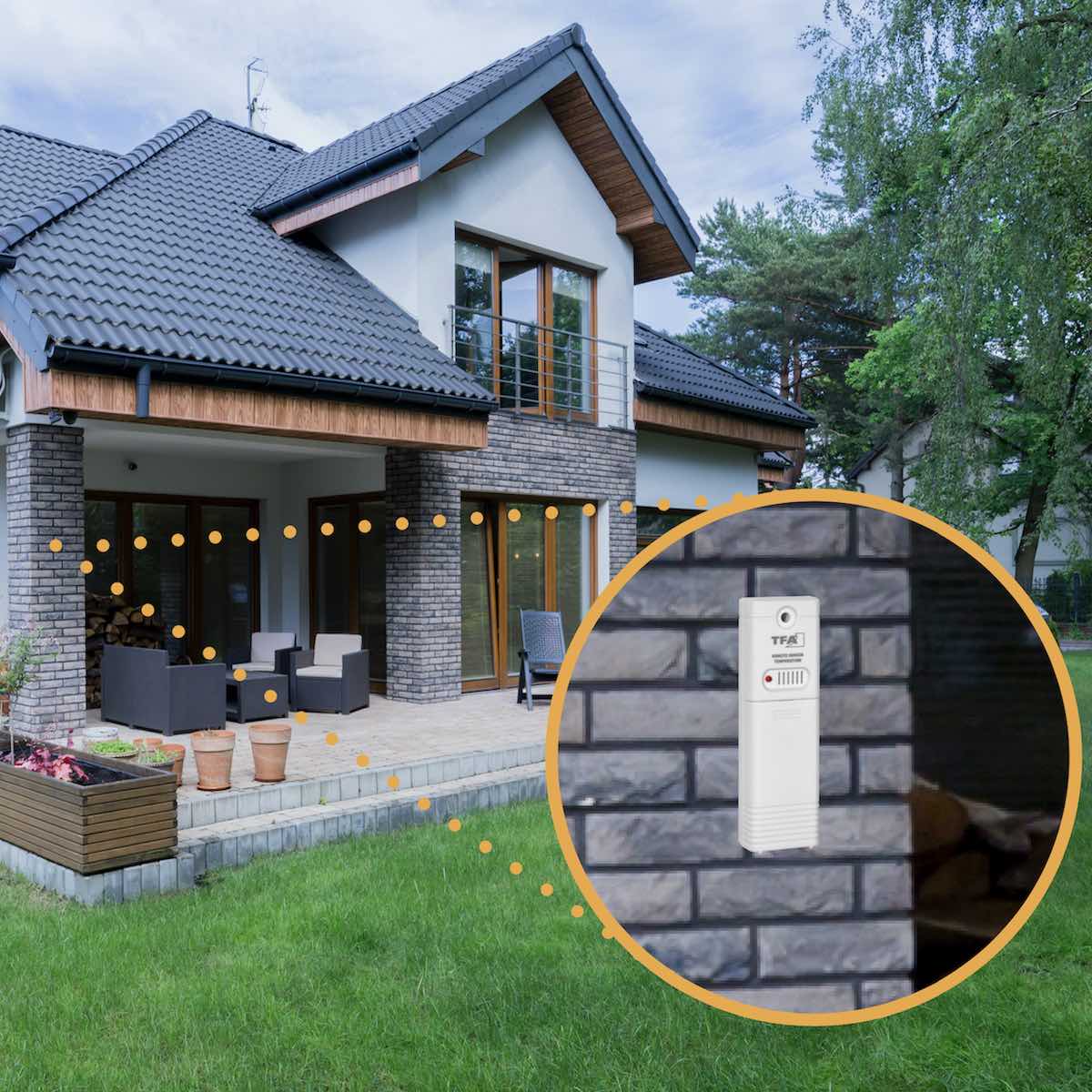
The ideal location for the thermometer: in the shade, on a neutral surface and protected from direct sunlight and rain.
Temperature measurement with an analogue thermometer
Expansion thermometers are among the most common analogue thermometers. These are divided into liquid thermometers or capillary thermometers and bimetallic thermometers.
Analogue liquid thermometers consist of a glass tube filled with a measuring liquid, to which a temperature scale is attached. This effect created the expansion of the measuring liquid changes with temperature. As the temperature increases, the liquid in the glass tube of the thermometer expands and the level in the capillary rises. If the temperature drops, the liquid contracts, and the liquid level drops. The respective temperature value can be read on the scale. TFA thermometers are adjusted at two measuring points and are therefore very accurate.
In the past, mercury was used for this purpose. Since 2009, the use of mercury has been banned within the EU, with the exception of the scientific and medical fields.
Bimetallic thermometers indicate the temperature via a pointer. Two metals (“Bi”), which react differently to temperature in their linear expansion, are firmly connected and wound into a spiral. The resulting tension causes the spring to move on the scale according to the temperature. Bimetallic thermometers are generally less accurate than capillary thermometers and have a tolerance of +/- 1.5 to 2 °C. Bimetallic thermometers can often be readjusted with a screwdriver.
The great advantage of analogue thermometers is that the measurement works without a battery or energy source. TFA Dostmann has been producing analogue thermometers at the company’s site in Wertheim for over 50 years.
Temperature measurement with a digital thermometer
Digital thermometers are equipped with sensors that help determine the temperature. Depending on their design and function, they are suitable for indoor and/or outdoor use.
Digital thermometers are often combined with other measuring devices such as a hygrometer. Hygrometers determine the air humidity. The advantage of thermo-hygrometers is that both the temperature value and the air humidity can be measured and controlled with one instrument. An ideal indoor climate can be achieved with correct heating and ventilation – the ideal humidity combined with the right temperature.
Measure correctly with infrared thermometers
First of all, it is important to point out that an infrared thermometer is only used to determine the surface temperature. The type of material and the surface condition of the material are relevant for a precise measurement result. In this context, the emissivity describes the ability of the object to emit infrared energy. Most infrared thermometers have a fixed emissivity of 0.95, which covers a wide range of materials.
Moreover, the correct distance is also essential for a precise measurement result. For this purpose, the distance to the target should be selected according to the measuring spot.
What measures more accurately – analogue or digital?
Do you often ask yourself which thermometer measures more accurately – the analogue or the digital thermometer? The answer depends on the measurement accuracy, which is the precision of the thermometer.
Every thermometer is based on an accuracy of the measurement. If this is +/- 1°C, then at an actual temperature of 25°C the temperature displayed can vary between 24 and 26°C.
Digital thermometers have a high measuring accuracy depending on the version. The machine adjusted analogue liquid thermometers from TFA Dostmann have an accuracy of +/- 1°C. However, it is important to read the temperature value horizontally on the scale for the measuring accuracy of these analogue thermometers. This works best if your eyes are on the same height as the liquid.
